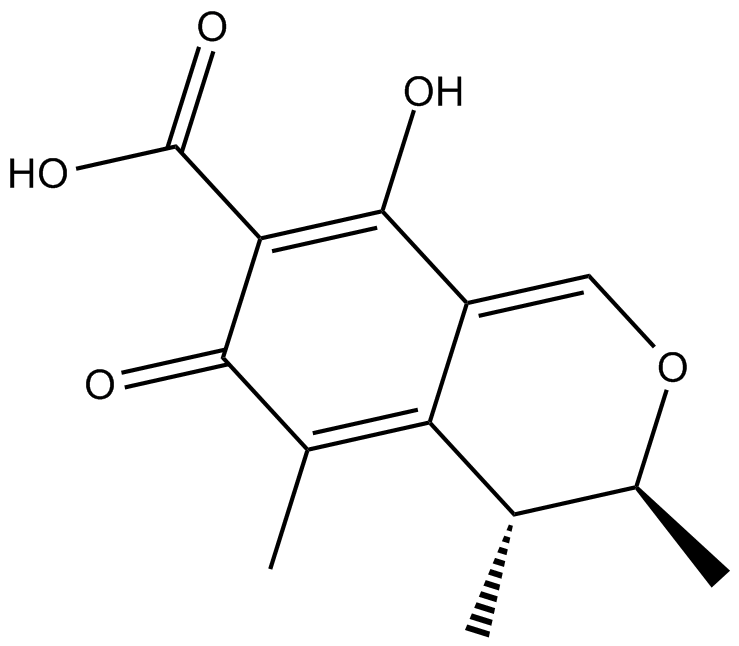Apoptosis
As one of the cellular death mechanisms, apoptosis, also known as programmed cell death, can be defined as the process of a proper death of any cell under certain or necessary conditions. Apoptosis is controlled by the interactions between several molecules and responsible for the elimination of unwanted cells from the body.
Many biochemical events and a series of morphological changes occur at the early stage and increasingly continue till the end of apoptosis process. Morphological event cascade including cytoplasmic filament aggregation, nuclear condensation, cellular fragmentation, and plasma membrane blebbing finally results in the formation of apoptotic bodies. Several biochemical changes such as protein modifications/degradations, DNA and chromatin deteriorations, and synthesis of cell surface markers form morphological process during apoptosis.
Apoptosis can be stimulated by two different pathways: (1) intrinsic pathway (or mitochondria pathway) that mainly occurs via release of cytochrome c from the mitochondria and (2) extrinsic pathway when Fas death receptor is activated by a signal coming from the outside of the cell.
Different gene families such as caspases, inhibitor of apoptosis proteins, B cell lymphoma (Bcl)-2 family, tumor necrosis factor (TNF) receptor gene superfamily, or p53 gene are involved and/or collaborate in the process of apoptosis.
Caspase family comprises conserved cysteine aspartic-specific proteases, and members of caspase family are considerably crucial in the regulation of apoptosis. There are 14 different caspases in mammals, and they are basically classified as the initiators including caspase-2, -8, -9, and -10; and the effectors including caspase-3, -6, -7, and -14; and also the cytokine activators including caspase-1, -4, -5, -11, -12, and -13. In vertebrates, caspase-dependent apoptosis occurs through two main interconnected pathways which are intrinsic and extrinsic pathways. The intrinsic or mitochondrial apoptosis pathway can be activated through various cellular stresses that lead to cytochrome c release from the mitochondria and the formation of the apoptosome, comprised of APAF1, cytochrome c, ATP, and caspase-9, resulting in the activation of caspase-9. Active caspase-9 then initiates apoptosis by cleaving and thereby activating executioner caspases. The extrinsic apoptosis pathway is activated through the binding of a ligand to a death receptor, which in turn leads, with the help of the adapter proteins (FADD/TRADD), to recruitment, dimerization, and activation of caspase-8 (or 10). Active caspase-8 (or 10) then either initiates apoptosis directly by cleaving and thereby activating executioner caspase (-3, -6, -7), or activates the intrinsic apoptotic pathway through cleavage of BID to induce efficient cell death. In a heat shock-induced death, caspase-2 induces apoptosis via cleavage of Bid.
Bcl-2 family members are divided into three subfamilies including (i) pro-survival subfamily members (Bcl-2, Bcl-xl, Bcl-W, MCL1, and BFL1/A1), (ii) BH3-only subfamily members (Bad, Bim, Noxa, and Puma9), and (iii) pro-apoptotic mediator subfamily members (Bax and Bak). Following activation of the intrinsic pathway by cellular stress, pro‑apoptotic BCL‑2 homology 3 (BH3)‑only proteins inhibit the anti‑apoptotic proteins Bcl‑2, Bcl-xl, Bcl‑W and MCL1. The subsequent activation and oligomerization of the Bak and Bax result in mitochondrial outer membrane permeabilization (MOMP). This results in the release of cytochrome c and SMAC from the mitochondria. Cytochrome c forms a complex with caspase-9 and APAF1, which leads to the activation of caspase-9. Caspase-9 then activates caspase-3 and caspase-7, resulting in cell death. Inhibition of this process by anti‑apoptotic Bcl‑2 proteins occurs via sequestration of pro‑apoptotic proteins through binding to their BH3 motifs.
One of the most important ways of triggering apoptosis is mediated through death receptors (DRs), which are classified in TNF superfamily. There exist six DRs: DR1 (also called TNFR1); DR2 (also called Fas); DR3, to which VEGI binds; DR4 and DR5, to which TRAIL binds; and DR6, no ligand has yet been identified that binds to DR6. The induction of apoptosis by TNF ligands is initiated by binding to their specific DRs, such as TNFα/TNFR1, FasL /Fas (CD95, DR2), TRAIL (Apo2L)/DR4 (TRAIL-R1) or DR5 (TRAIL-R2). When TNF-α binds to TNFR1, it recruits a protein called TNFR-associated death domain (TRADD) through its death domain (DD). TRADD then recruits a protein called Fas-associated protein with death domain (FADD), which then sequentially activates caspase-8 and caspase-3, and thus apoptosis. Alternatively, TNF-α can activate mitochondria to sequentially release ROS, cytochrome c, and Bax, leading to activation of caspase-9 and caspase-3 and thus apoptosis. Some of the miRNAs can inhibit apoptosis by targeting the death-receptor pathway including miR-21, miR-24, and miR-200c.
p53 has the ability to activate intrinsic and extrinsic pathways of apoptosis by inducing transcription of several proteins like Puma, Bid, Bax, TRAIL-R2, and CD95.
Some inhibitors of apoptosis proteins (IAPs) can inhibit apoptosis indirectly (such as cIAP1/BIRC2, cIAP2/BIRC3) or inhibit caspase directly, such as XIAP/BIRC4 (inhibits caspase-3, -7, -9), and Bruce/BIRC6 (inhibits caspase-3, -6, -7, -8, -9).
Any alterations or abnormalities occurring in apoptotic processes contribute to development of human diseases and malignancies especially cancer.
References:
1.Yağmur Kiraz, Aysun Adan, Melis Kartal Yandim, et al. Major apoptotic mechanisms and genes involved in apoptosis[J]. Tumor Biology, 2016, 37(7):8471.
2.Aggarwal B B, Gupta S C, Kim J H. Historical perspectives on tumor necrosis factor and its superfamily: 25 years later, a golden journey.[J]. Blood, 2012, 119(3):651.
3.Ashkenazi A, Fairbrother W J, Leverson J D, et al. From basic apoptosis discoveries to advanced selective BCL-2 family inhibitors[J]. Nature Reviews Drug Discovery, 2017.
4.McIlwain D R, Berger T, Mak T W. Caspase functions in cell death and disease[J]. Cold Spring Harbor perspectives in biology, 2013, 5(4): a008656.
5.Ola M S, Nawaz M, Ahsan H. Role of Bcl-2 family proteins and caspases in the regulation of apoptosis[J]. Molecular and cellular biochemistry, 2011, 351(1-2): 41-58.
What is Apoptosis? The Apoptotic Pathways and the Caspase Cascade
Targets for Apoptosis
- Pyroptosis(15)
- Caspase(77)
- 14.3.3 Proteins(3)
- Apoptosis Inducers(71)
- Bax(15)
- Bcl-2 Family(136)
- Bcl-xL(13)
- c-RET(15)
- IAP(32)
- KEAP1-Nrf2(73)
- MDM2(21)
- p53(137)
- PC-PLC(6)
- PKD(8)
- RasGAP (Ras- P21)(2)
- Survivin(8)
- Thymidylate Synthase(12)
- TNF-α(141)
- Other Apoptosis(1145)
- Apoptosis Detection(0)
- Caspase Substrate(0)
- APC(6)
- PD-1/PD-L1 interaction(60)
- ASK1(4)
- PAR4(2)
- RIP kinase(47)
- FKBP(22)
Products for Apoptosis
- Cat.No. 상품명 정보
-
GC47042
Carfilzomib-d8
카르필조미브 양적 분석을 위한 내부 표준제품

-
GN10733
Carnosic acid
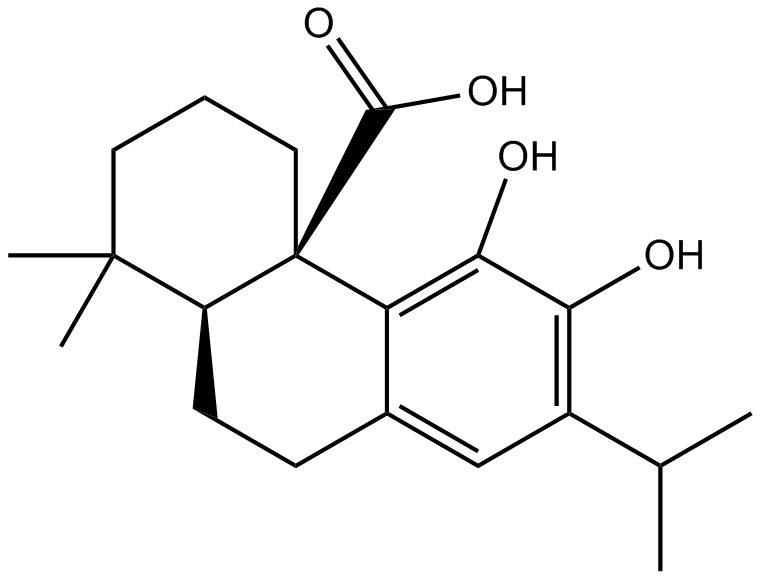
-
GC45679
Carubicin
Carubicin(Carminomycin)은 미생물 유래 화합물입니다.

-
GC64110
Carubicin hydrochloride
카루비신 염산염은 미생물 유래 화합물입니다.
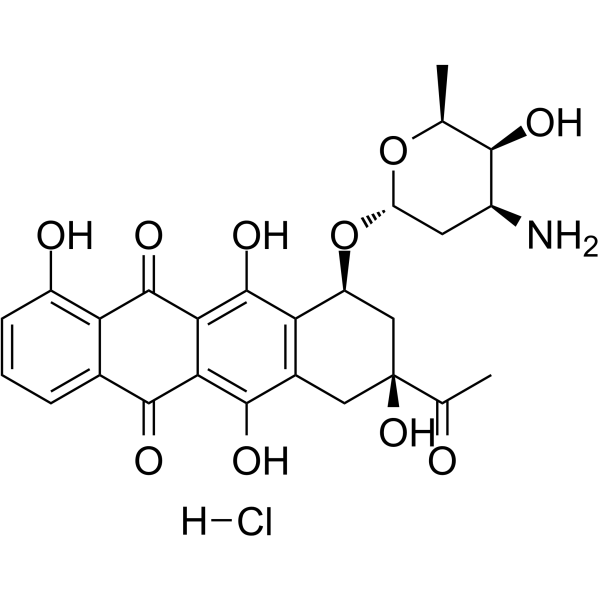
-
GC35612
Carvacrol
Carvacrol은 Thymus mongolicus Ronn에서 분리된 모노테르페노이드 페놀입니다.
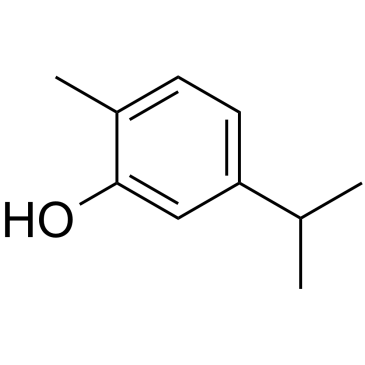
-
GC62442
Casein Kinase inhibitor A51
카제인 키나제 억제제 A51은 강력하고 경구 활성인 카제인 키나제 1α(CK1α) 억제제입니다. Casein Kinase inhibitor A51은 백혈병 세포사멸을 유도하고 강력한 항백혈병 활성을 갖는다.
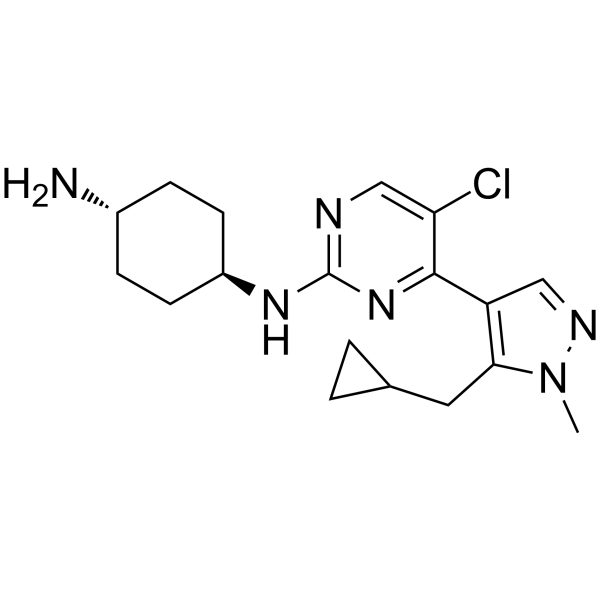
-
GC32841
Catechin ((+)-Catechin)
카테킨((+)-카테킨)((+)-카테킨((+)-카테킨))은 1.4 μ의 IC50으로 사이클로옥시게나제-1(COX-1)을 억제합니다.
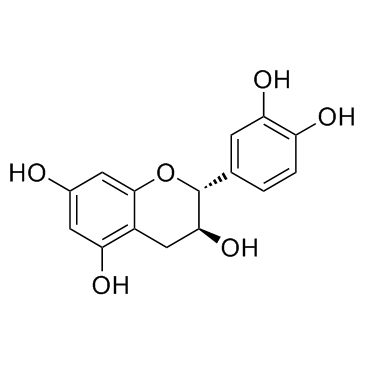
-
GN10543
caudatin
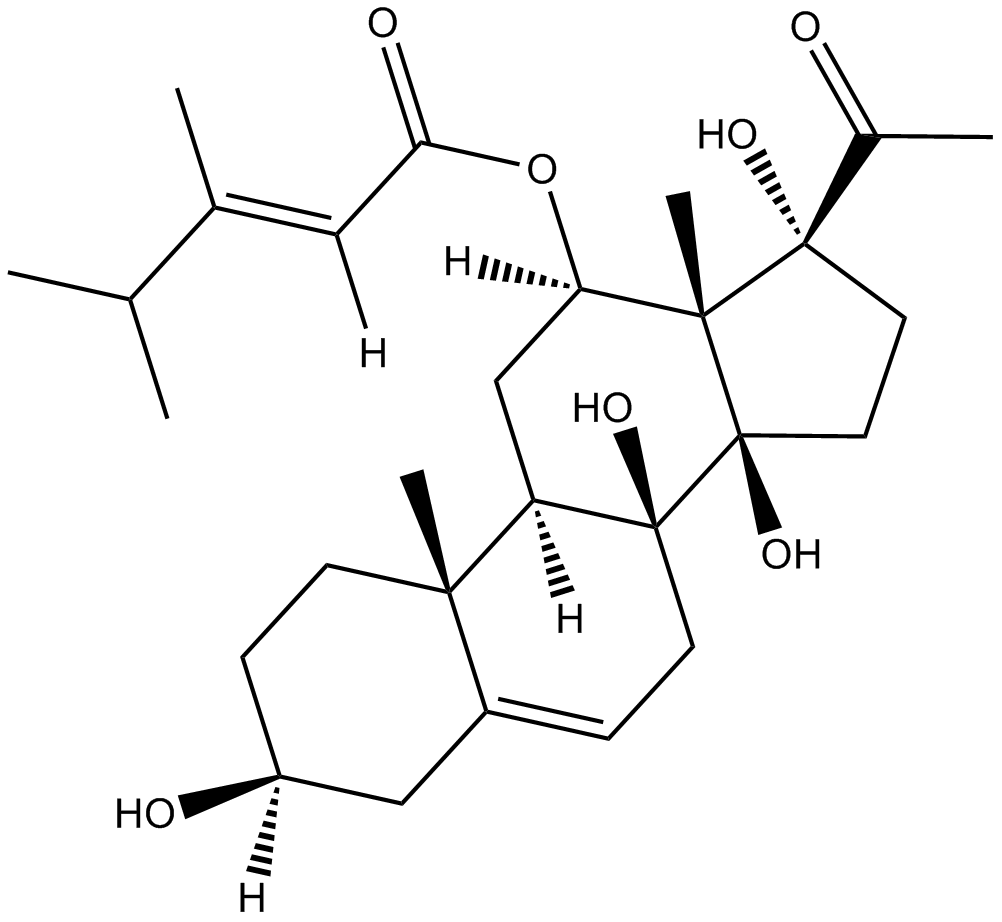
-
GC43149
CAY10404
CAY10404는 IC50이 1nM이고 선택도 지수(SI; COX-1 IC50/COX-2 IC50)가 >500000인 강력하고 선택적인 시클로옥시게나제-2(COX-2) 억제제입니다.

-
GC43150
CAY10406
CAY10406 is a trifluoromethyl analog of an isatin sulfonamide compound that selectively inhibits caspases 3 and 7.

-
GC43154
CAY10443
Mitochondrial release of cytochrome c triggers apoptosis via the assembly of a multimeric complex including caspase-9, Apaf-1, and other components, sometimes called the apoptosome.

-
GC43176
CAY10575
CAY10575(화합물 8)는 IC50이 0.075 μ인 IKK2 억제제입니다.

-
GC18530
CAY10616
Resveratrol is a natural polyphenolic antioxidant that has anti-cancer properties.
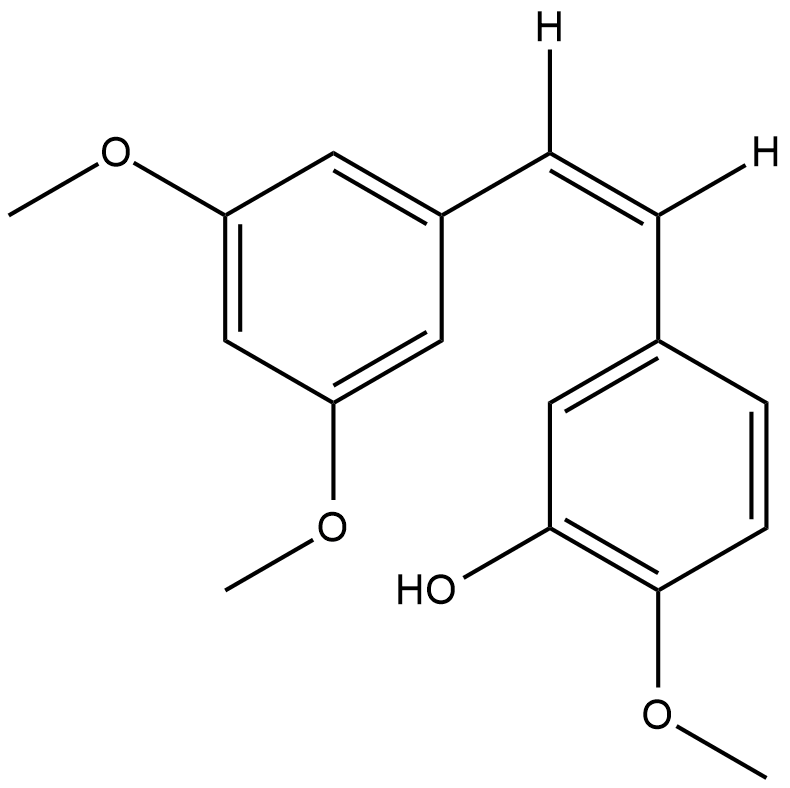
-
GC41317
CAY10625
Survivin is a cellular protein implicated in cell survival by interacting with and inhibiting the apoptotic function of several proteins including Smac/DIABLO, caspase-3, and caspase-7.

-
GC43189
CAY10681
Inactivation of the tumor suppressor p53 commonly coincides with increased signaling through NF-κB in cancer.

-
GC43190
CAY10682
(±)-Nutlin-3 blocks the interaction of p53 with its negative regulator Mdm2 (IC50 = 90 nM), inducing the expression of p53-regulated genes and blocking the growth of tumor xenografts in vivo.

-
GC40650
CAY10706
CAY10706 is a ligustrazine-curcumin hybrid that promotes intracellular reactive oxygen species accumulation preferentially in lung cancer cells.

-
GC43198
CAY10717
CAY10717 is a multi-targeted kinase inhibitor that exhibits greater than 40% inhibition of 34 of 104 kinases in an enzymatic assay at a concentration of 100 nM.

-
GC43203
CAY10726
CAY10726 is an arylurea fatty acid.

-
GC46113
CAY10744
A topoisomerase II-α poison

-
GC47053
CAY10746
A ROCK1 and ROCK2 inhibitor

-
GC48392
CAY10747
An inhibitor of the Hsp90-Cdc37 protein-protein interaction

-
GC47055
CAY10749
CAY10749 (화합물 15)는 PARP-1에 대한 8.22, 8.44, 8.25, 6.54, 8.13, 6.08의 PIC50 값을 갖는 강력한 PARP/PI3K 억제제이다. offlineefficient_models_2022q2.md.en_ko_2021q1.mdCAY10749 is a highly effective anticancer compound targeted against a wide range of oncologic diseases.en_ko_2021q1.md

-
GC47057
CAY10755
A fungal metabolite with anticancer activity

-
GC47061
CAY10763
A dual inhibitor of IDO1 and STAT3 activation

-
GC47065
CAY10773
A derivative of sorafenib

-
GC49080
CAY10786
CAY10786(화합물 43)은 IC50이 0.63 μ인 GPR52 길항제입니다.

-
GC52245
CAY10792
An anticancer agent

-
GC14634
CBL0137
curaxin that activates p53 and inhibits NF-κB
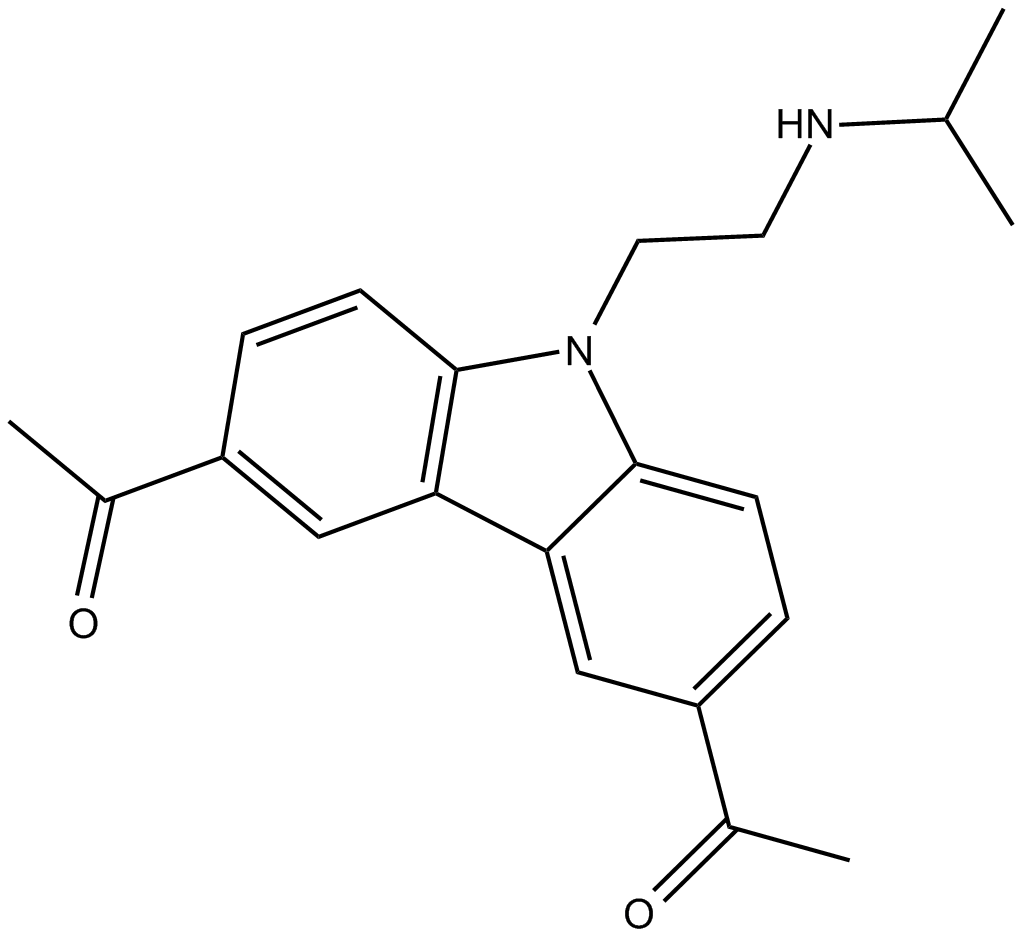
-
GC15394
CBL0137 (hydrochloride)
CBL0137(염산염)은 히스톤 샤페론인 FACT의 억제제입니다. CBL0137(염산염)은 또한 p53을 활성화하고 각각 0.37 및 0.47μM의 EC50으로 NF-κB를 억제할 수 있습니다.
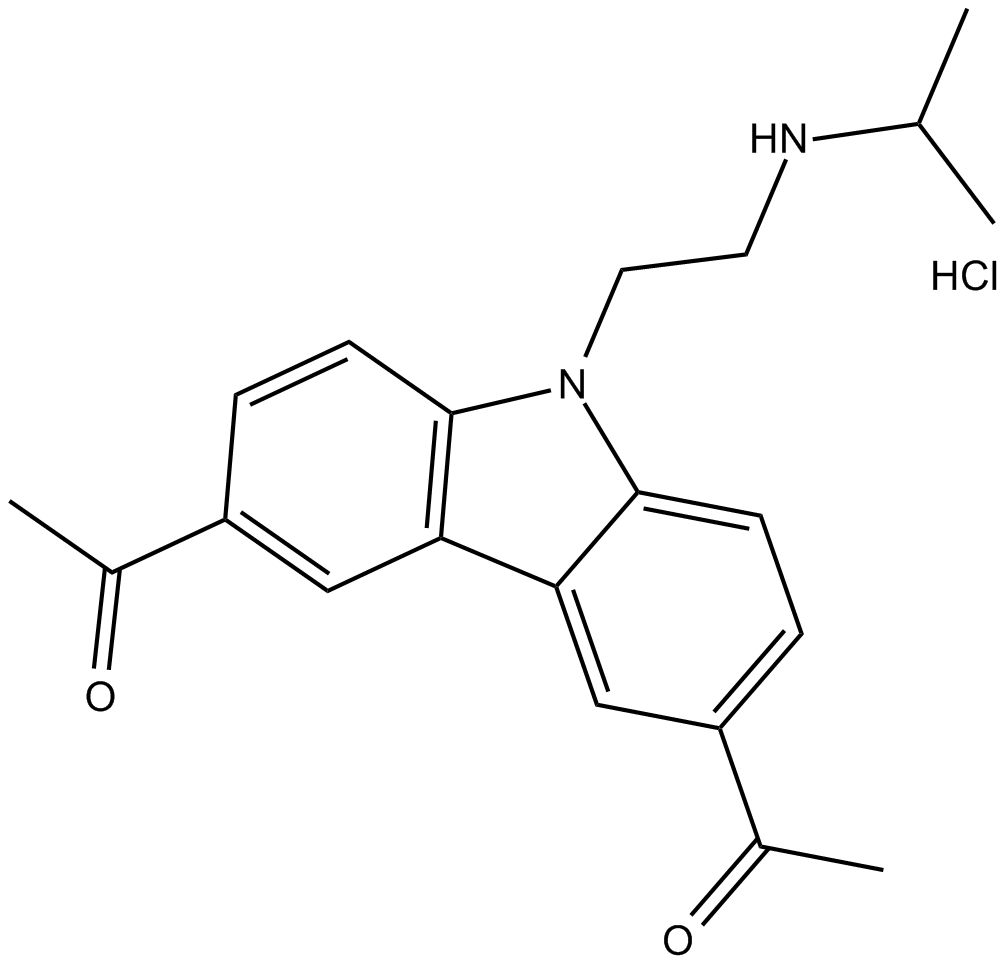
-
GC61636
CBR-470-2
글리신 치환 유사체인 CBR-470-2는 NRF2 신호전달을 활성화할 수 있습니다.
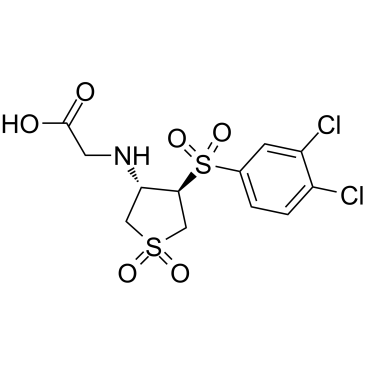
-
GC13648
CC-223
CC-223(CC-223)은 mTOR 키나제의 IC50 값이 16nM인 강력하고 선택적이며 경구 생체이용 가능한 mTOR 키나제의 억제제입니다. CC-223은 mTORC1과 mTORC2를 모두 억제합니다.
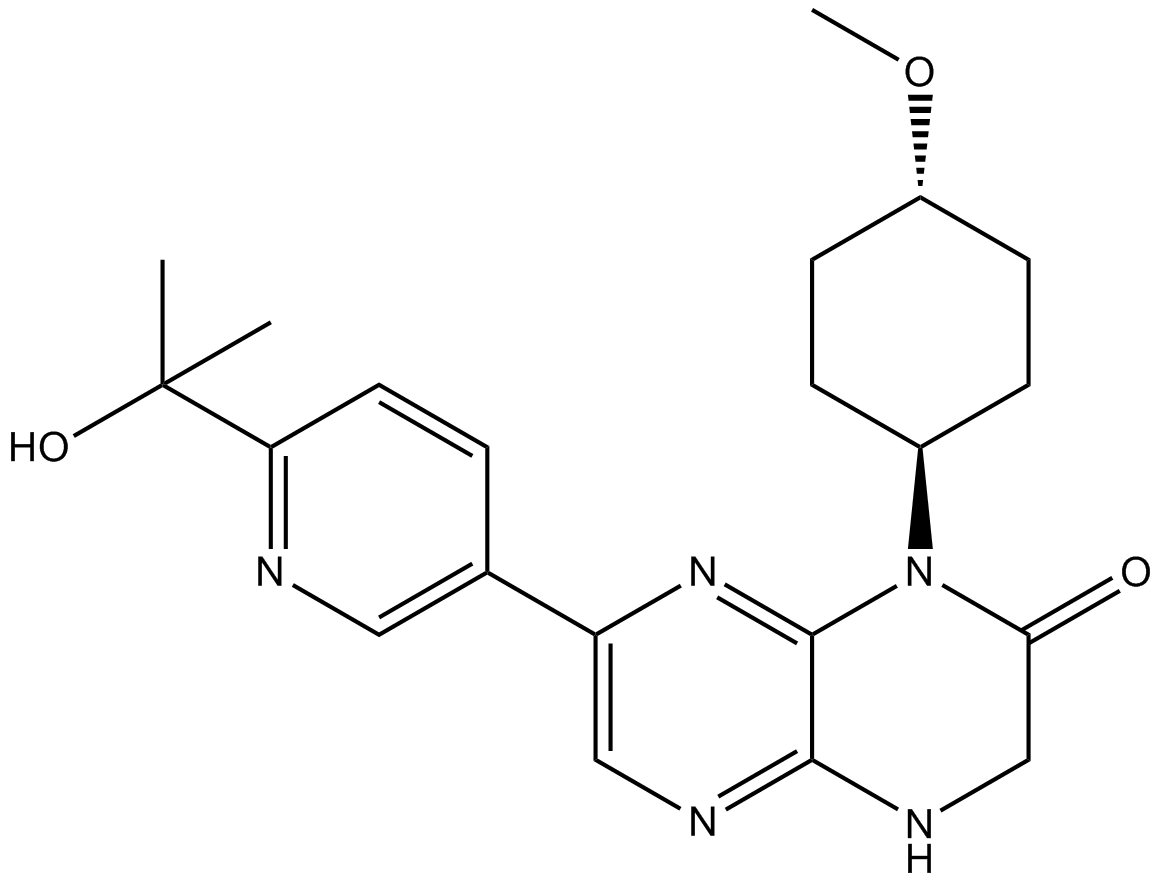
-
GC39169
CC-92480
CC-92480(CC-92480), 세레블론 E3 유비퀴틴 리가제 조절 약물(CELMoD)은 분자 접착제 역할을 합니다. CC-92480은 소뇌에 높은 친화력을 보여 강력한 항골수종 활성을 나타냅니다.
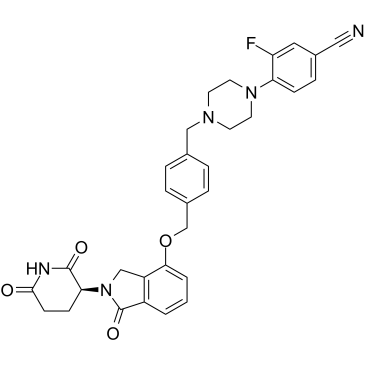
-
GC19088
CC122
CC122(CC 122)는 경구 활성 대뇌 조절제입니다.
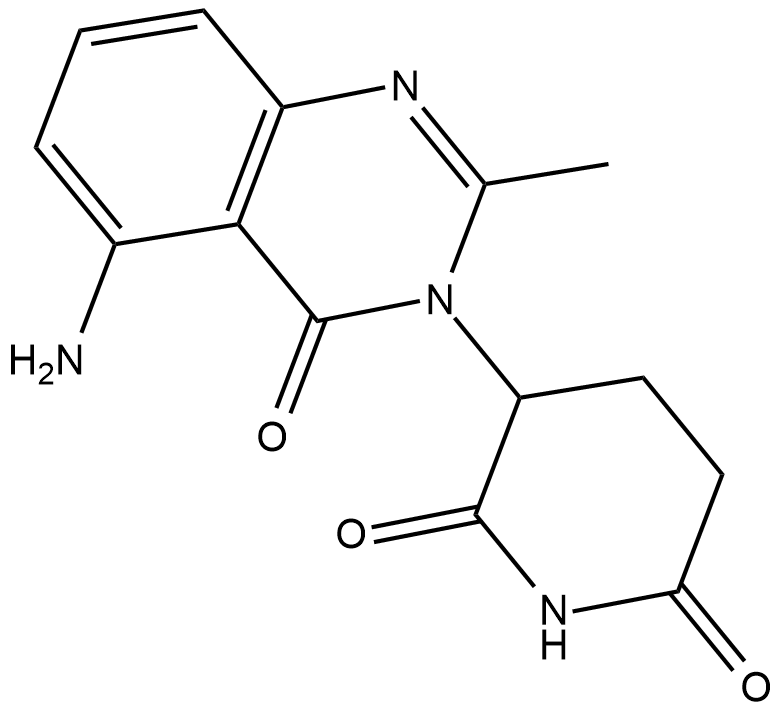
-
GC61532
CCI-007
CCI-007은 민감한 세포에서 IC50 값이 2.5-6.2μM인 MLL 재배열이 있는 유아 백혈병에 대한 세포독성 활성을 갖는 소분자입니다.
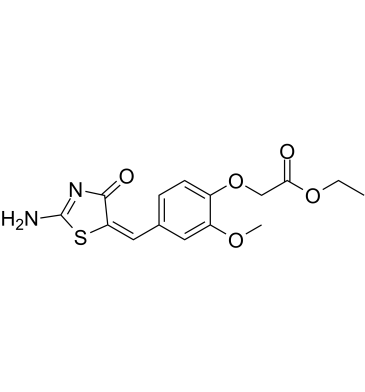
-
GC12891
CCT007093
CCT007093은 효과적인 단백질 포스파타제 1D(PPM1D Wip1) 억제제입니다. Wip1 억제는 mTORC1 경로를 활성화하고 간절제술 후 간세포 증식을 향상시킬 수 있습니다.
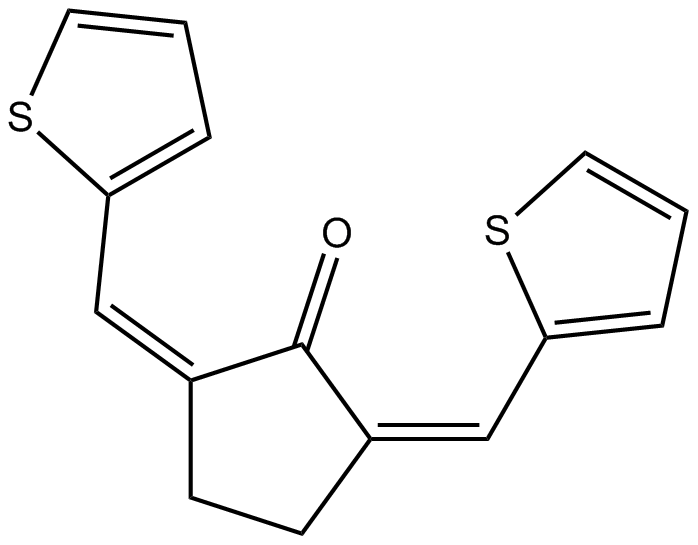
-
GC14566
CCT137690
An inhibitor of Aurora kinases and FLT3
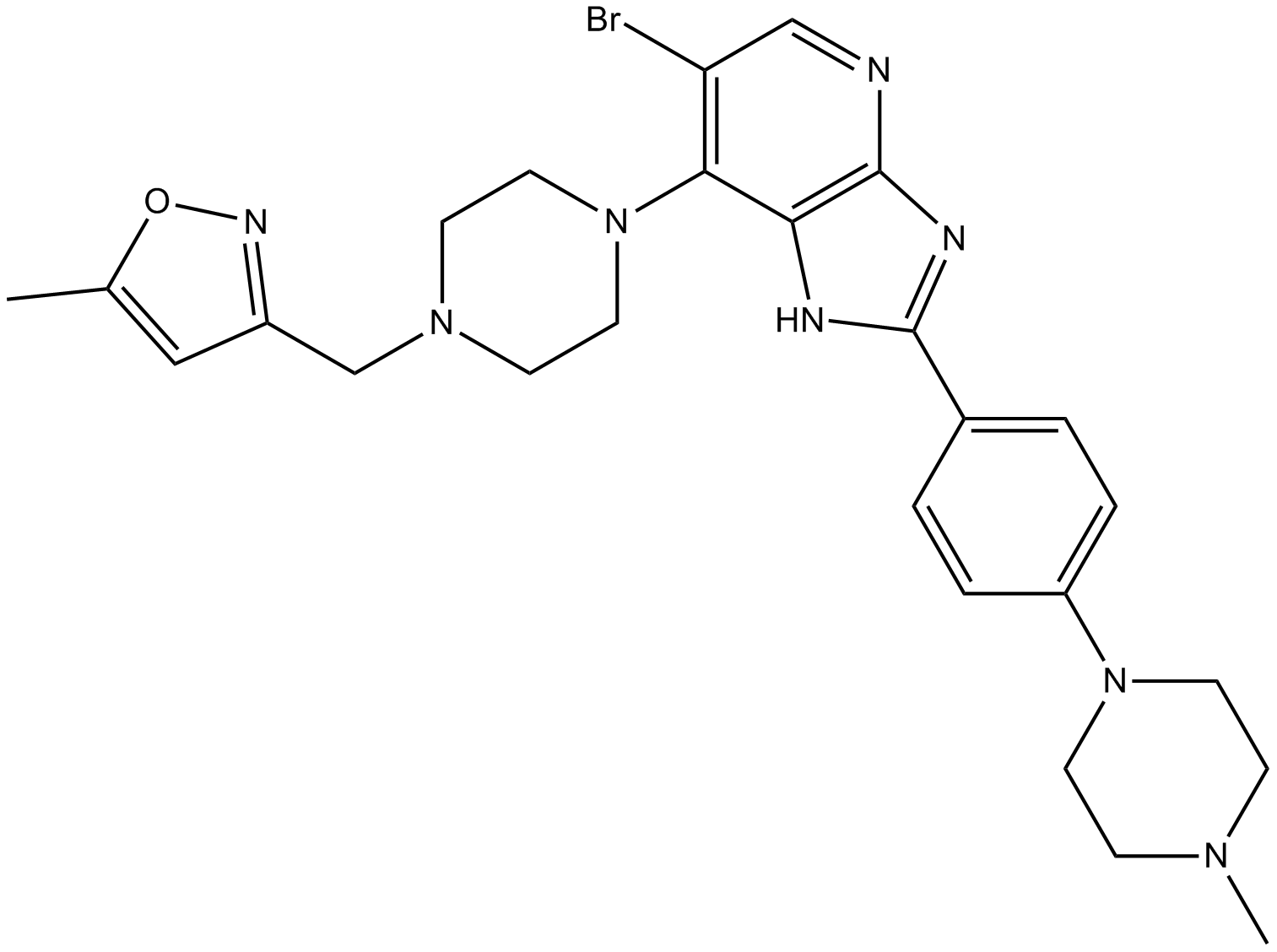
-
GC62561
CCT369260
CCT369260(화합물 1)은 항종양 활성을 갖는 경구 활성 B-세포 림프종 6(BCL6) 억제제입니다. CCT369260(화합물 1)은 520nM의 IC50을 나타냅니다.
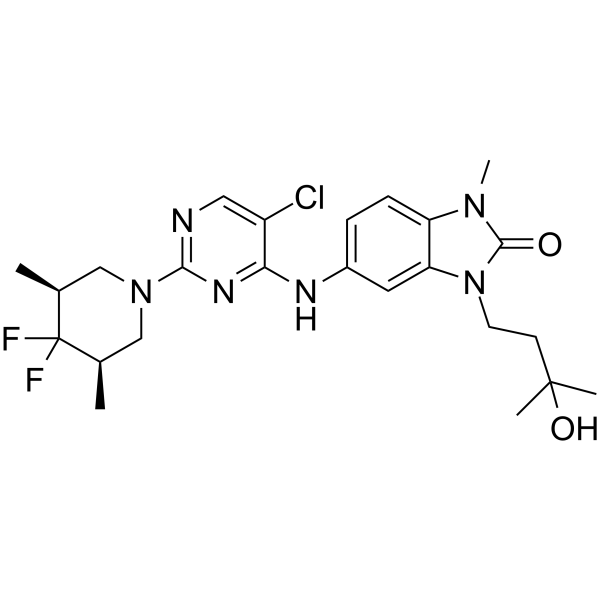
-
GC33337
CDC801
CDC801은 강력한 경구 활성 포스포디에스테라제 4(PDE4) 및 종양 괴사 인자-α입니다. (TNF-α) IC50이 각각 1.1 μM 및 2.5 μM인 억제제.
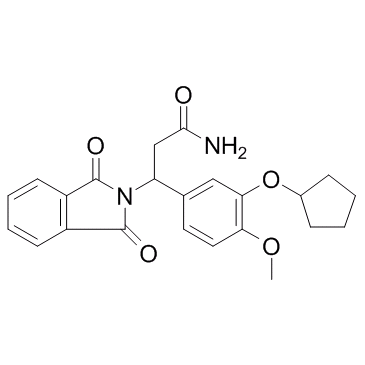
-
GC39555
CDDO-2P-Im
CDDO-2P-Im은 화학 예방 효과가 있는 CDDO-Imidazolide의 유사체입니다. CDDO-2P-Im은 마우스 폐암 모델에서 폐 종양의 크기와 중증도를 감소시킬 수 있습니다.
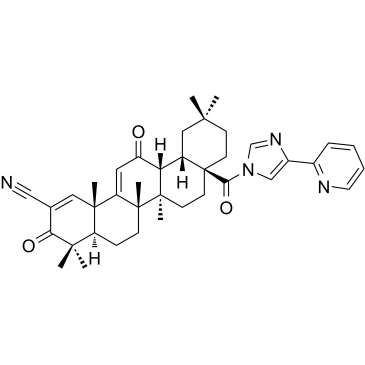
-
GC39556
CDDO-3P-Im
CDDO-3P-Im은 화학 예방 효과가 있는 CDDO-Imidazolide의 유사체입니다. CDDO-3P-Im은 마우스 폐암 모델에서 폐 종양의 크기와 중증도를 감소시킬 수 있습니다. CDDO-3P-Im은 허혈/재관류(I/R) 연구에 사용할 수 있는 경구 활성 괴사 억제제입니다.
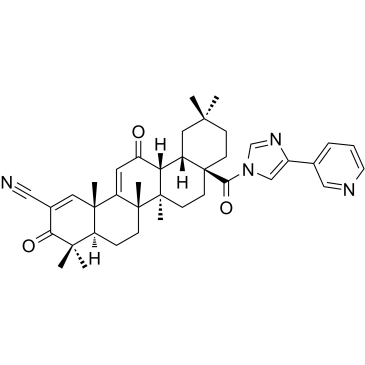
-
GC35629
CDDO-dhTFEA
CDDO-dhTFEA(RTA dh404)는 Nrf2를 강력하게 활성화하고 전염증성 전사 인자 NF-κB를 억제하는 합성 올레아난 트리테르페노이드 화합물입니다.
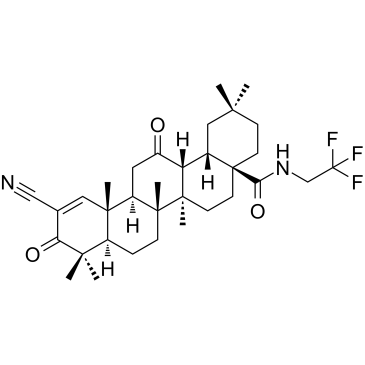
-
GC35630
CDDO-EA
CDDO-EA는 NF-E2 관련 인자 2/항산화 반응 요소(Nrf2/ARE) 활성화제입니다.

-
GC32723
CDDO-Im (RTA-403)
CDDO-Im(RTA-403)(RTA-403)은 PPARα에 대해 Kis가 232 및 344nM인 Nrf2 및 PPAR의 활성화제입니다. 및 PPARγ.
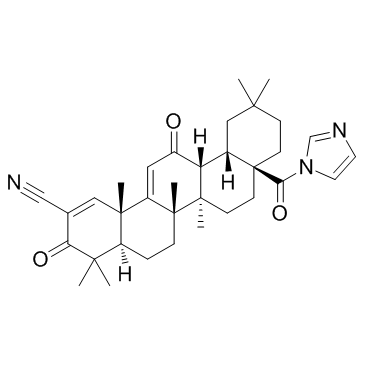
-
GC16625
CDDO-TFEA
Nrf2 activator
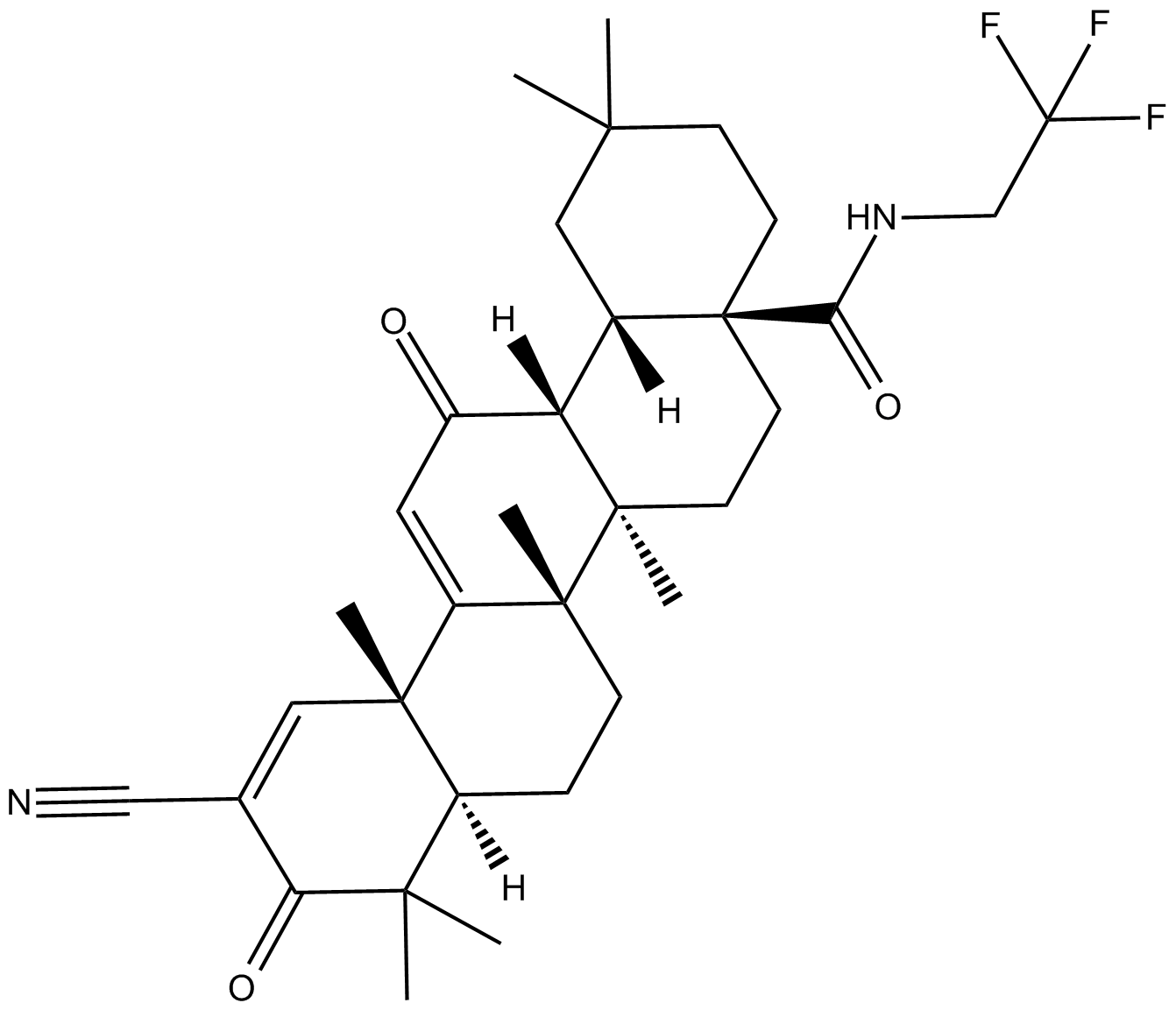
-
GC43217
CDK/CRK Inhibitor
CDK/CRK inhibitor is an inhibitor of cyclin-dependent kinases (CDK) and CDK-related kinases (CRK) with IC50 values ranging from 9-839 nM in vitro.

-
GC62596
CDK7-IN-3
CDK7-IN-3(CDK7-IN-3)은 0.065nM의 KD를 갖는 경구 활성, 고도로 선택적인, 비공유 CDK7 억제제입니다. CDK7-IN-3은 CDK2(Ki=2600 nM), CDK9(Ki=960 nM), CDK12(Ki=870 nM)에 대한 낮은 억제를 보여줍니다. CDK7-IN-3은 종양 세포에서 세포자멸사를 유도하고 항종양 활성을 갖는다.
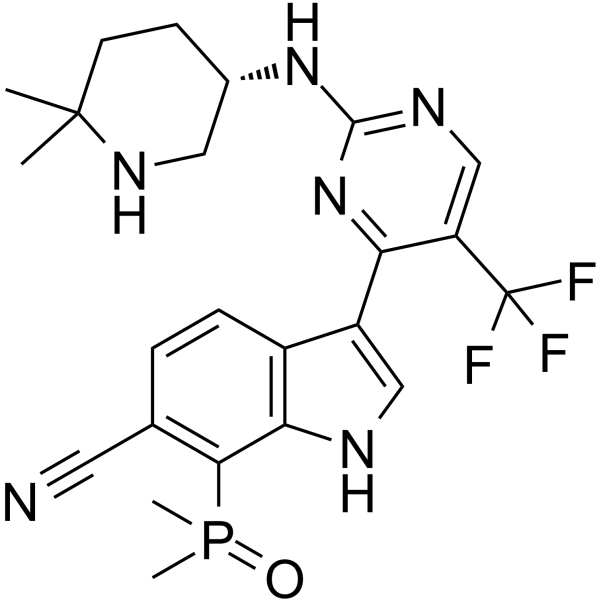
-
GC35636
CDK9-IN-7
CDK9-IN-7(화합물 21e)은 다른 CDK(CDK4/cyclinD=148 nM; CDK6/cyclinD= 145nM). CDK9-IN-7은 명백한 독성 없이 항종양 활성을 나타냅니다. CDK9-IN-7은 NSCLC 세포 사멸을 유도하고 G2 단계에서 세포 주기를 정지시키며 NSCLC의 줄기 특성을 억제합니다.
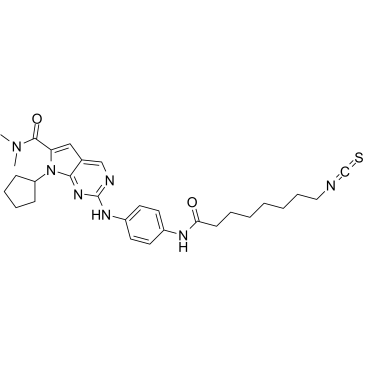
-
GC19096
CDKI-73
CDKI-73(LS-007)은 CDK9, CDK1 및 CDK2에 대해 각각 4nM, 4nM 및 3nM의 Ki 값을 갖는 경구 활성 및 매우 효과적인 CDK9 억제제입니다.
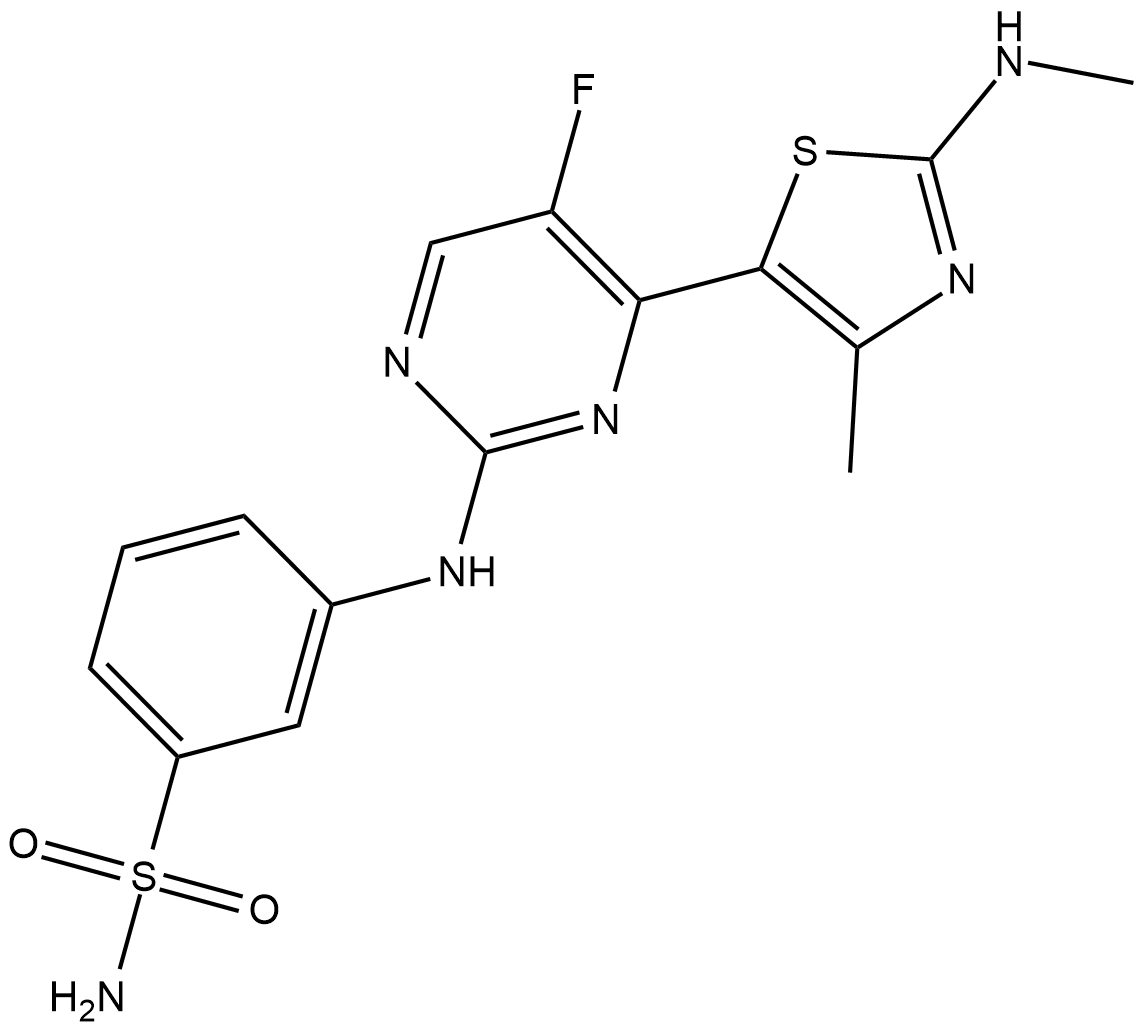
-
GC61865
Cearoin
Cearoin은 ROS의 생산과 ERK의 활성화를 통해 autophagy와 apoptosis를 증가시킵니다.
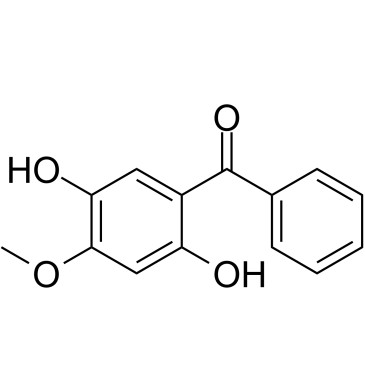
-
GC15083
Celastrol
A triterpenoid antioxidant
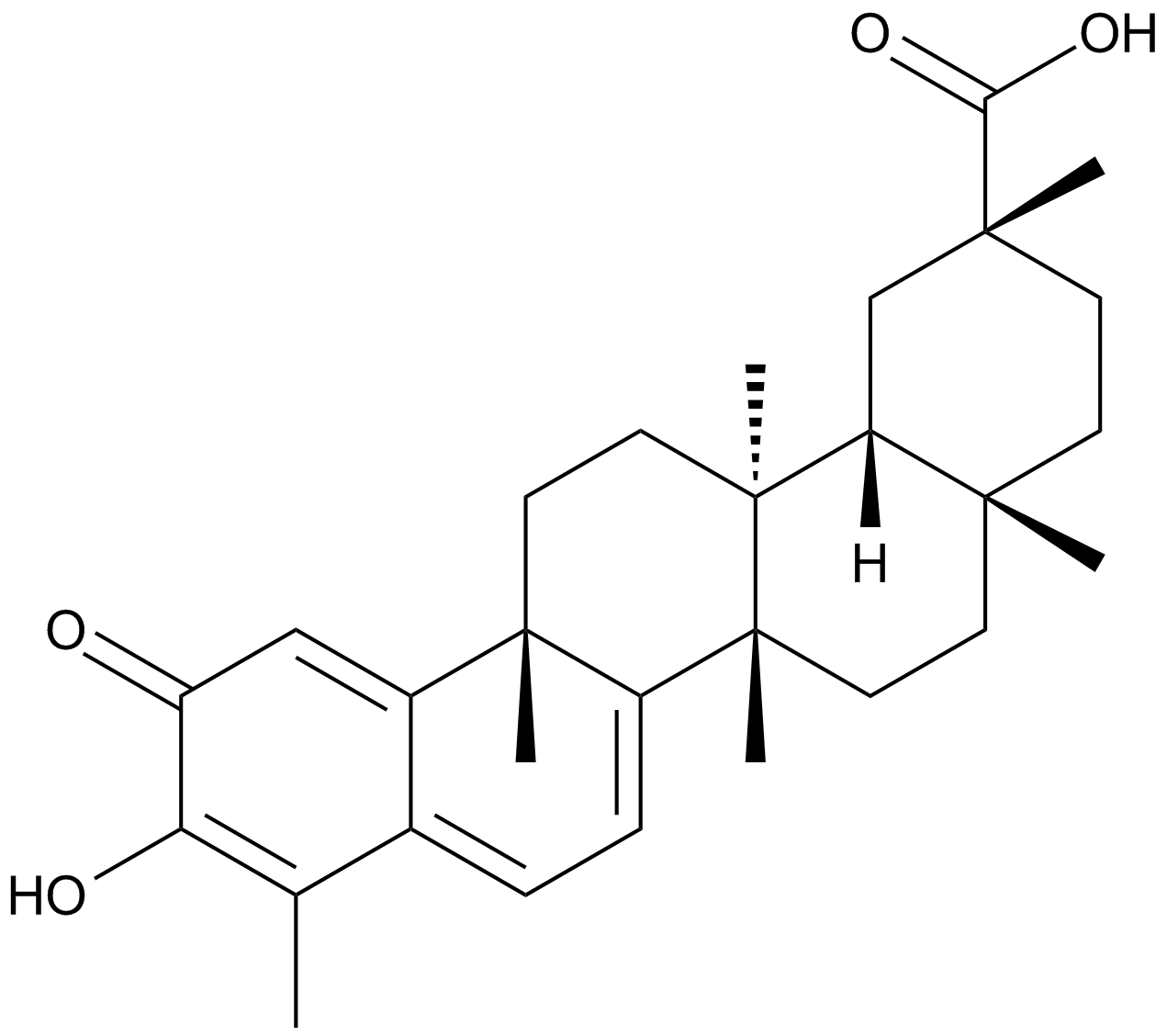
-
GC49152
Celecoxib Carboxylic Acid
An inactive metabolite of celecoxib

-
GC47070
Celecoxib-d7
An internal standard for the quantification of celecoxib

-
GC18392
Cellocidin
Cellocidin is an antibiotic originally isolated from S.
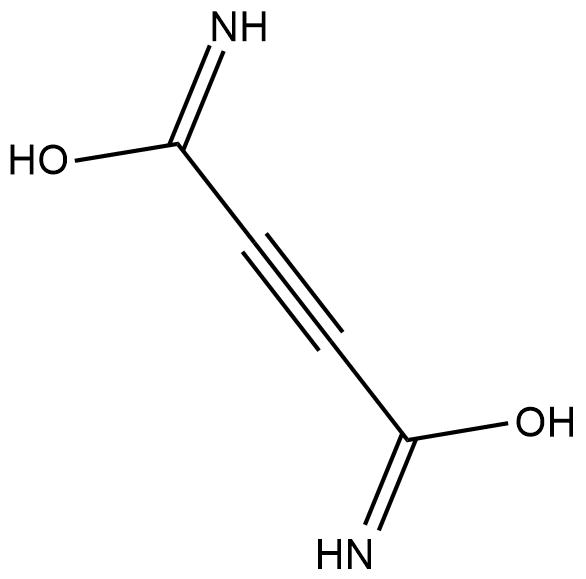
-
GN10113
Cepharanthine
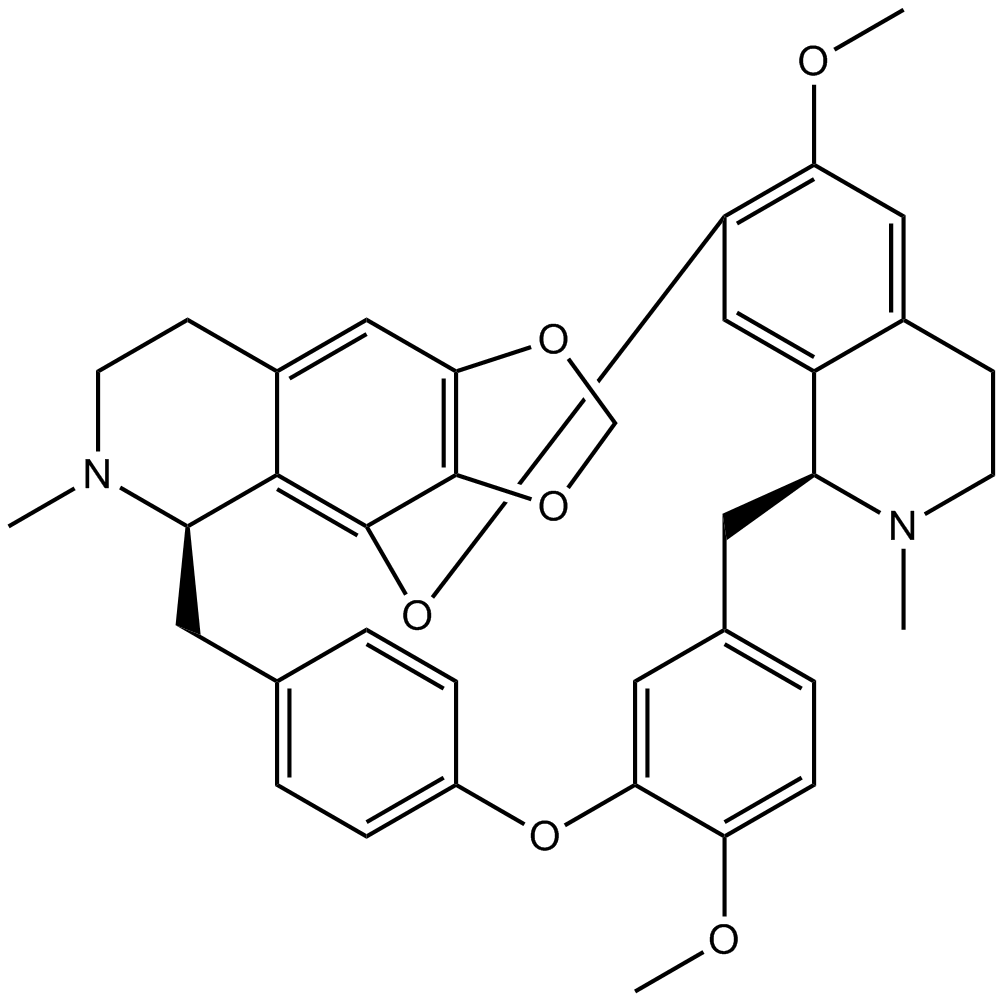
-
GC52489
Ceramide (hydroxy) (bovine spinal cord)
A sphingolipid

-
GC52485
Ceramide (non-hydroxy) (bovine spinal cord)
A sphingolipid

-
GC52486
Ceramide Phosphoethanolamine (bovine)
A sphingolipid

-
GC43229
Ceramide Phosphoethanolamines (bovine)
Ceramide phosphoethanolamine (CPE) is an analog of sphingomyelin that contains ethanolamine rather than choline as the head group.

-
GC47073
Ceramides (hydroxy)
A mixture of hydroxy fatty acid-containing ceramides

-
GC43230
Ceramides (non-hydroxy)
Ceramides are generated from sphingomyelin through activation of sphingomyelinases or through the de novo synthesis pathway, which requires the coordinated action of serine palmitoyl transferase and ceramide synthase.

-
GC49706
Cerberin
A cardiac glycoside with cytotoxic and cardiac modulatory activities

-
GC60688
Cereblon modulator 1
세레블론 조절제 1(CC-90009)은 동급 최초의 GSPT1 선택적 세레블론(CRBN) E3 리가제 조절제로서 분자 접착제 역할을 합니다.
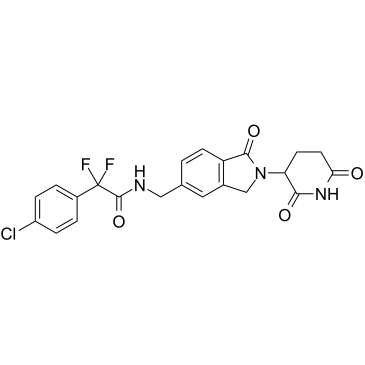
-
GC65487
Certolizumab pegol
Certolizumab pegol (Certolizumab)은 인간화된 모노클로널 항체의 항원 결합 단편을 재조합하고 폴리에틸렌 글리콜화한 것으로, 특이적으로 종양 괴사 인자-α(TNF-α)를 대상으로 선택적으로 중화시키는 약물입니다.
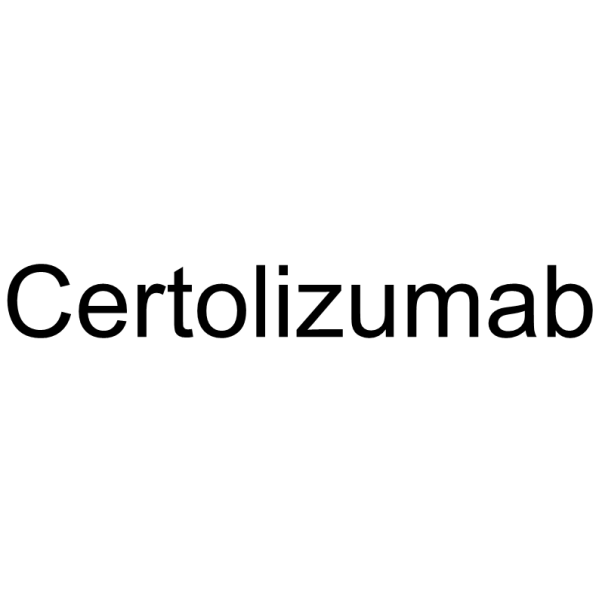
-
GC11543
Cesium chloride
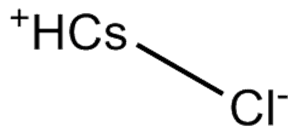
-
GC11710
CFM 4
CFM 4는 CARP-1/APC-2 결합의 강력한 소분자 길항제입니다. CFM 4는 APC-2와의 CARP-1 결합을 방지하고 G2M 세포 주기 정지를 유발하며 IC50 범위가 10-15 μM. CFM 4는 또한 약물 내성 인간 유방암 세포의 성장을 억제합니다.
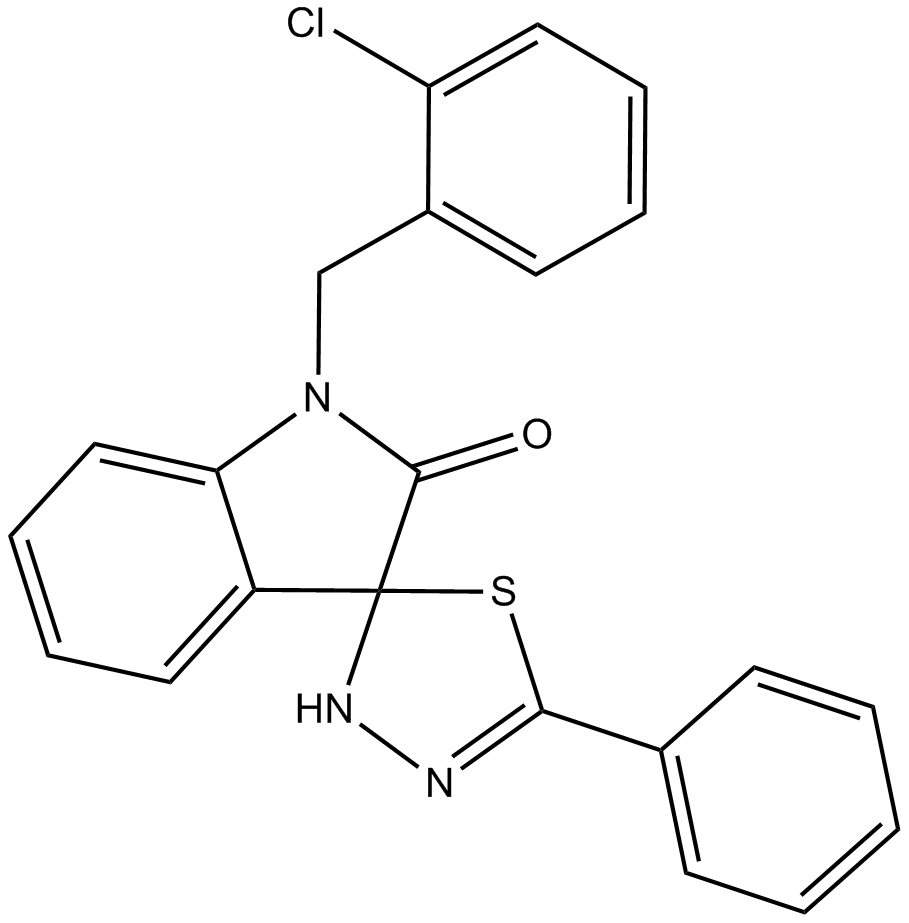
-
GC35668
CG-200745
CG-200745(CG-200745)는 촉매 포켓의 바닥에 아연을 결합하는 하이드록삼산 부분이 있는 경구 활성, 강력한 pan-HDAC 억제제입니다. CG-200745는 히스톤 H3와 튜불린의 탈아세틸화를 억제한다. CG-200745는 p53의 축적을 유도하고, p53-dependent transactivation을 촉진하고, MDM2 및 p21(Waf1/Cip1) 단백질의 발현을 향상시킵니다. CG-200745는 젬시타빈 및 5-플루오로우라실(5-FU; )에 대한 젬시타빈 내성 세포의 민감도를 향상시킵니다. CG-200745는 세포사멸을 유도하고 항종양 효과가 있다.
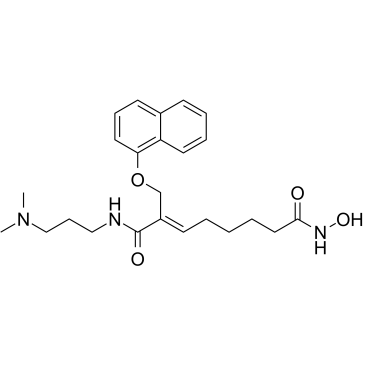
-
GC10666
CGP 57380
CGP 57380은 2.2μM의 IC50으로 Mnk1의 선택적 억제제로 작용하지만 p38, JNK1, ERK1/2, PKC 또는 Src-like kinase에 대한 억제 활성이 없는 세포 투과성 pyrazolo-pyrimidine 화합물입니다.
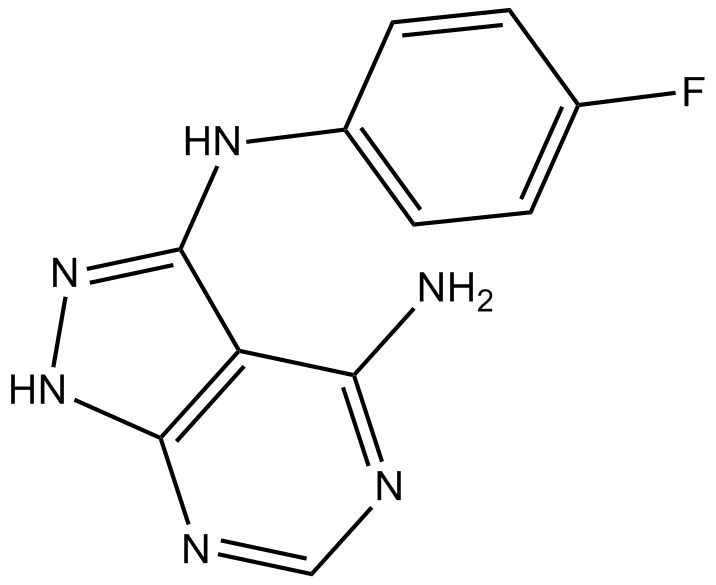
-
GC43234
Chaetoglobosin A
Penicillium aquamarinium 추출물의 활성 성분인 Chaetoglobosin A는 cytochalasan 계열의 구성원입니다.

-
GC18536
Chartreusin
Chartreusin is an antibiotic originally isolated from S.
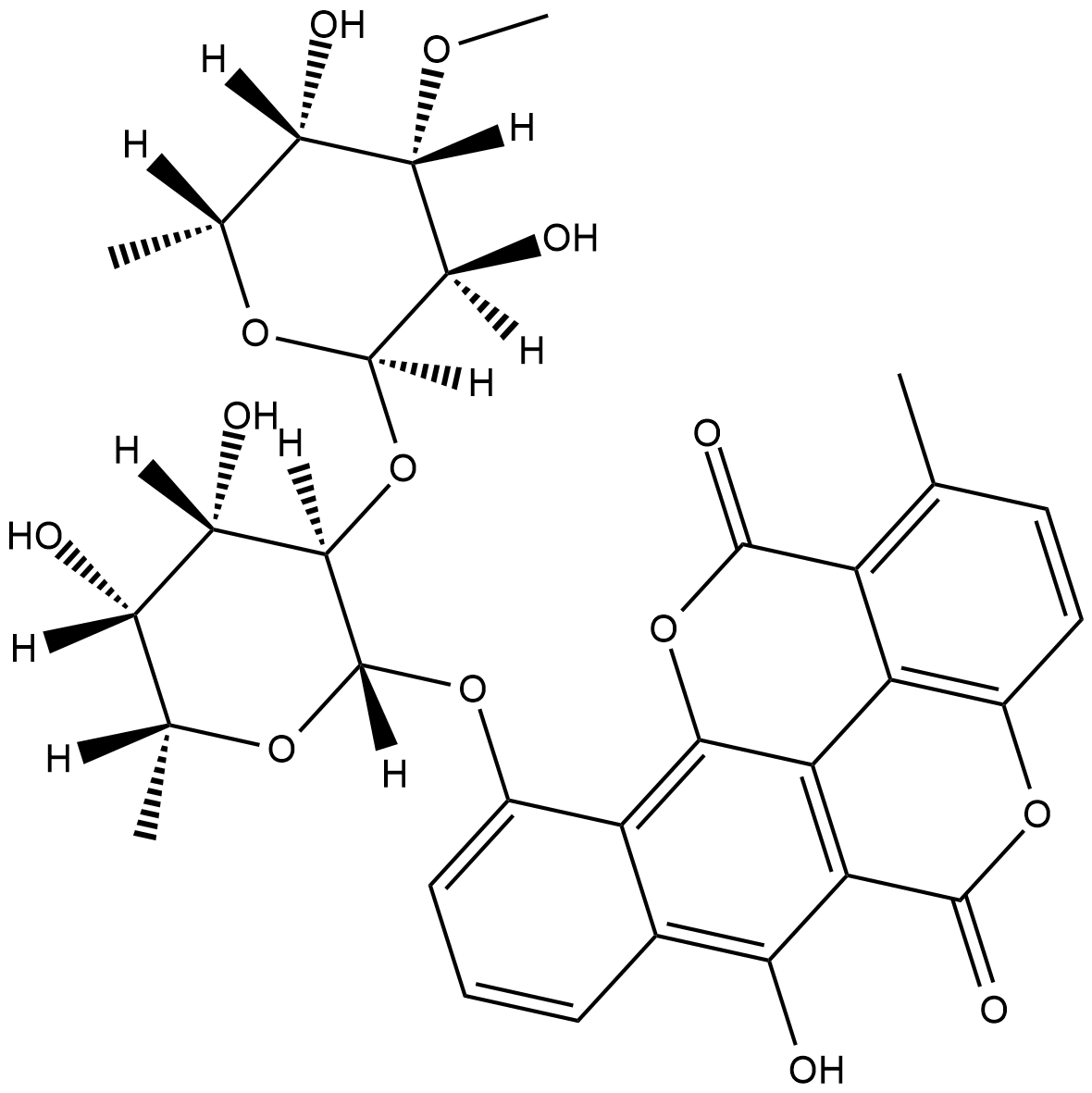
-
GN10463
Chelerythrine
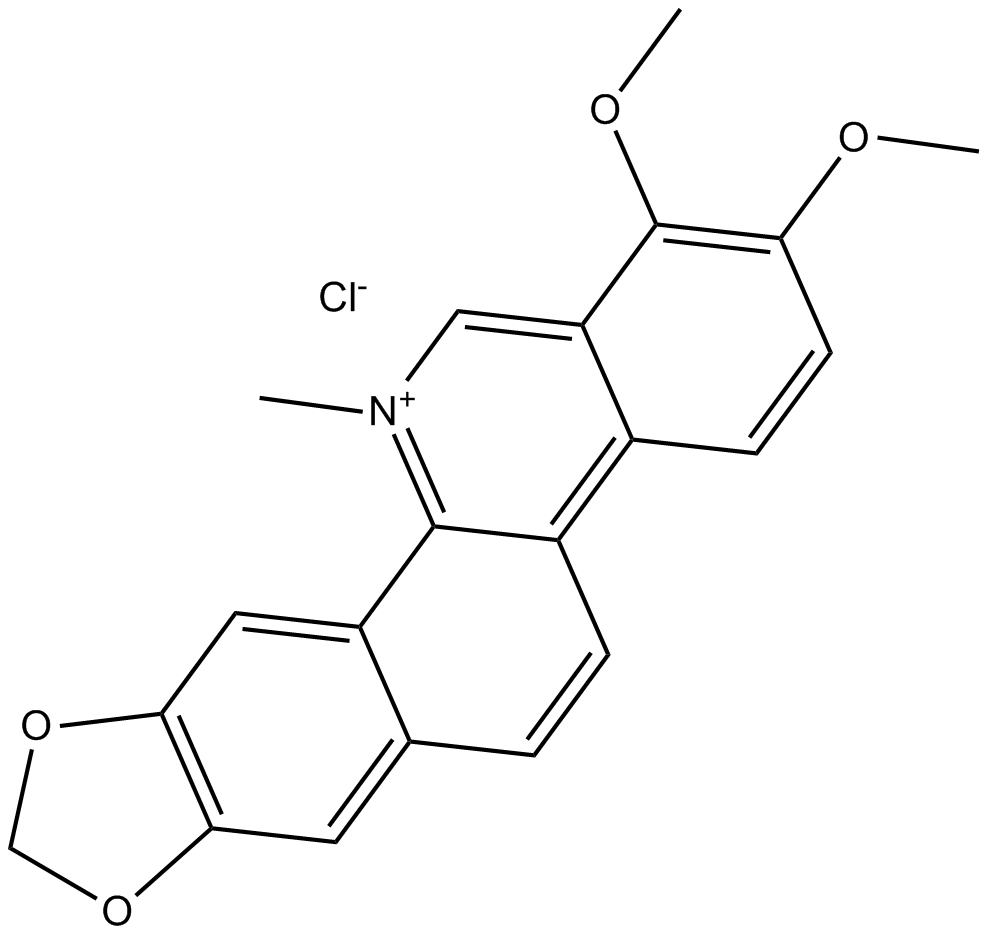
-
GC13065
Chelerythrine Chloride
Potent inhibitor of PKC and Bcl-xL
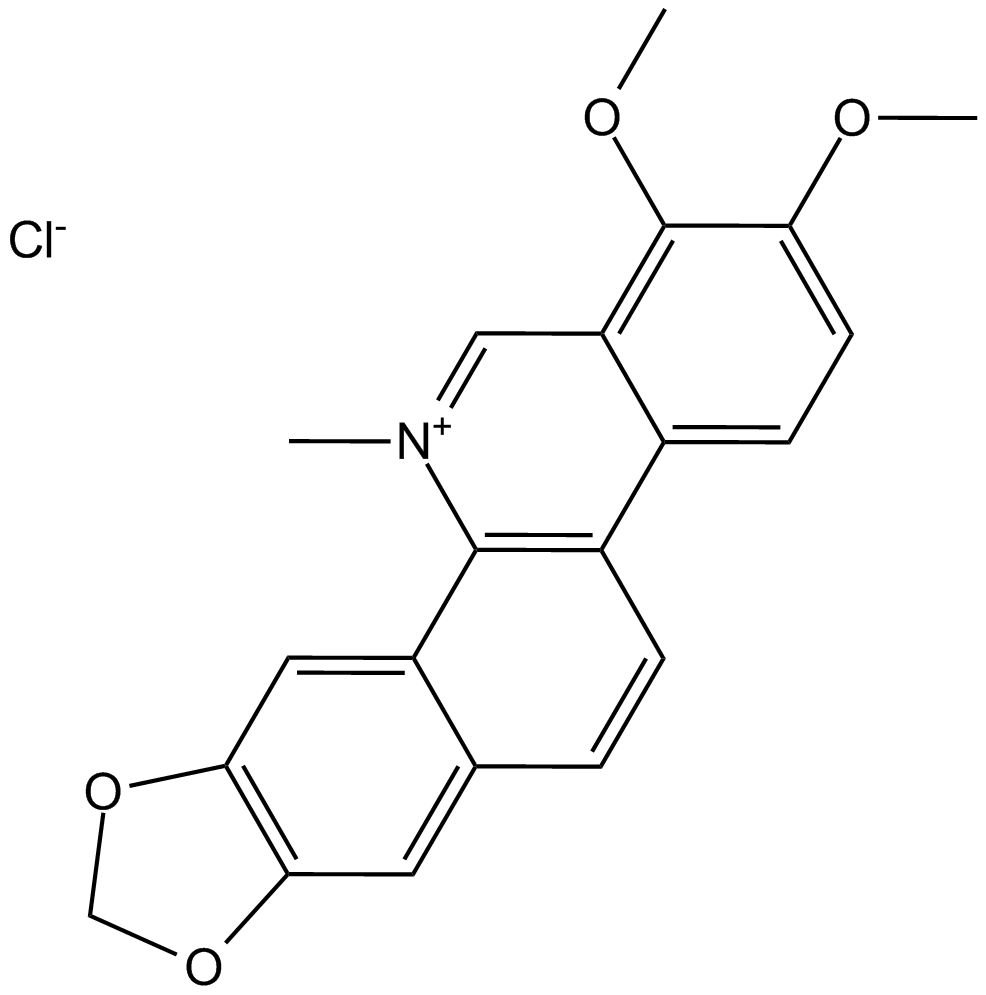
-
GC31886
Chelidonic acid
Chelidonic acid는 Chelidonium majus L의 성분입니다.
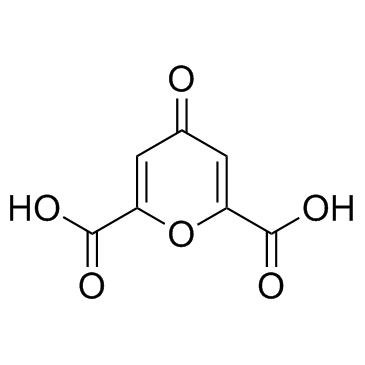
-
GC40878
Chelidonine
Chelidonine은 이소퀴놀린 알칼로이드이며 Chelidonium majus L.

-
GC43236
Chevalone B
Chevalone B is a meroterpenoid originally isolated from the fungus E.

-
GC43237
Chevalone C
메로테르페노이드 곰팡이 대사산물인 Chevalone C는 25.00 μg/mL의 IC50 값으로 항말라리아 활성을 나타냅니다.

-
GC64993
Chicoric acid
경구 활성 디카페일타르타르산인 치코릭산(Cichoric acid)은 활성산소종(ROS) 생성을 유도합니다.
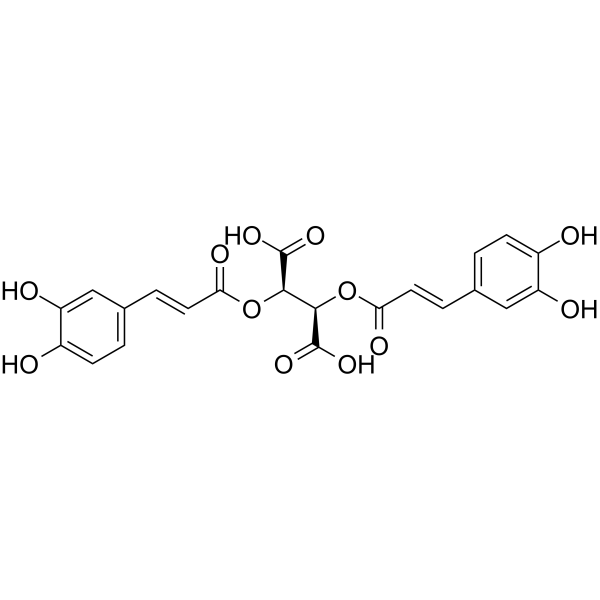
-
GC15739
CHIR-124
CHIR-124는 IC50이 0.3nM인 강력하고 선택적인 Chk1 억제제이며, IC50이 6.6nM 및 5.8nM인 PDGFR 및 FLT3도 강력하게 표적합니다.
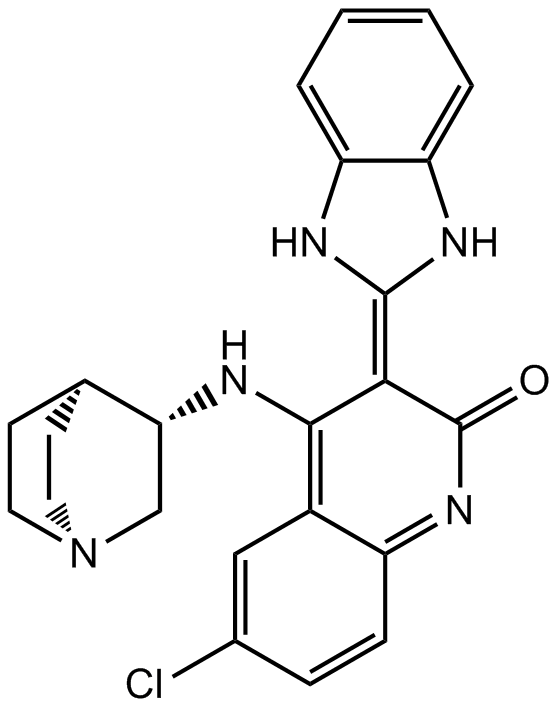
-
GC43239
Chk2 Inhibitor
Chk2 억제제(화합물 1)는 Chk2 및 Chk1에 대한 IC50이 각각 13.5nM 및 220.4nM인 체크포인트 키나제 2(Chk2)의 강력하고 선택적인 억제제입니다. Chk2 억제제는 강한 ATM(ataxia telangiectasia mutated) 의존성 Chk2 매개 방사선 보호 효과를 유발할 수 있습니다.

-
GC45717
Chlamydocin
곰팡이 대사산물인 Chlamydocin은 IC50이 1.3nM인 매우 강력한 HDAC 억제제입니다. Chlamydocin은 강력한 항증식 및 항암 활성을 나타냅니다. Chlamydocin은 caspase-3를 활성화하여 apoptosis를 유도합니다.

-
GC17969
CHM 1
An inhibitor of tubulin polymerization
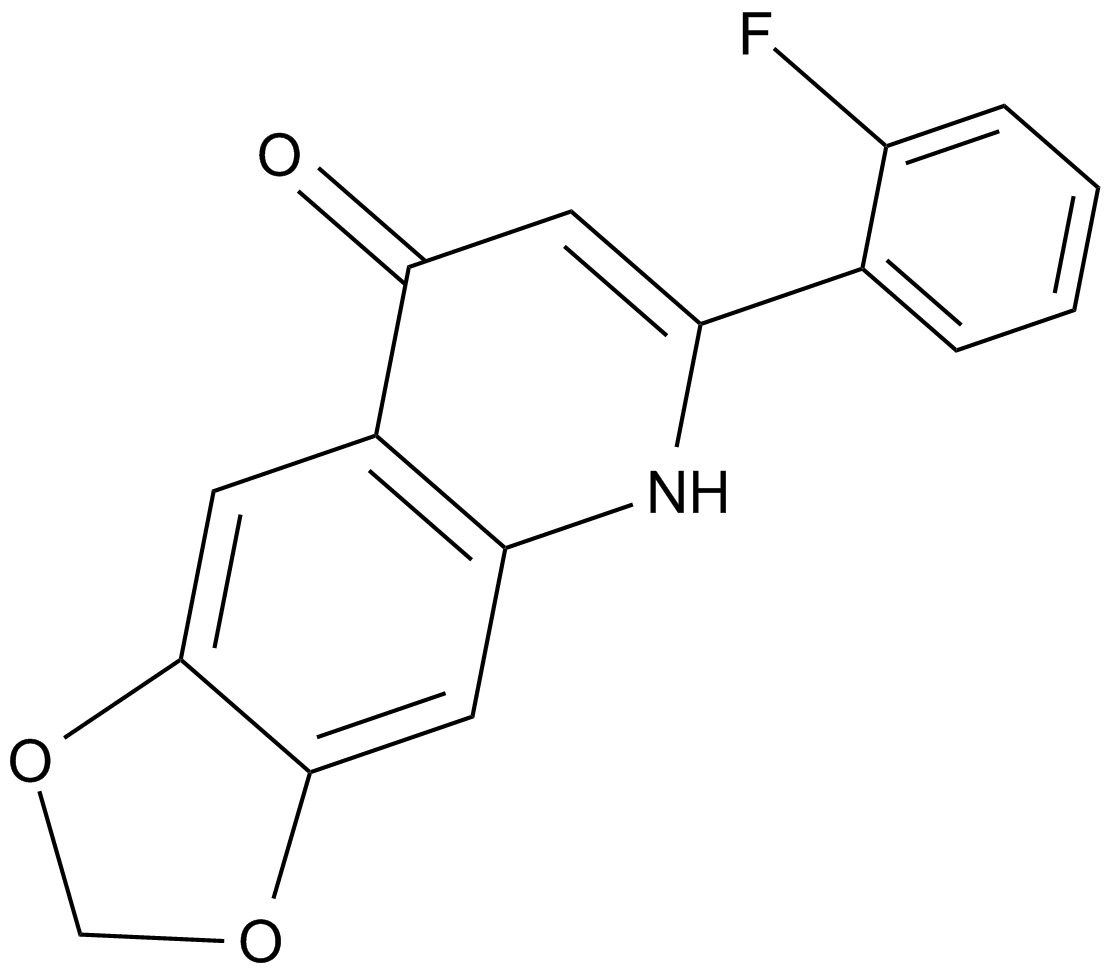
-
GC35682
CHMFL-ABL/KIT-155
CHMFL-ABL/KIT-155(CHMFL-ABL-KIT-155; 화합물 34)는 매우 강력하고 경구 활성인 유형 II ABL/c-KIT 이중 키나제 억제제(각각 46nM 및 75nM의 IC50)이며, 또한 BLK(IC50=81 nM), CSF1R(IC50=227 nM), DDR1(IC50=116 nM), DDR2(IC50=325 nM), LCK(IC50=12 nM) 및 PDGFRβ(IC50= 80 nM) 키나제. CHMFL-ABL/KIT-155(CHMFL-ABL-KIT-155)는 세포 주기 진행을 정지시키고 세포자멸사를 유도합니다.
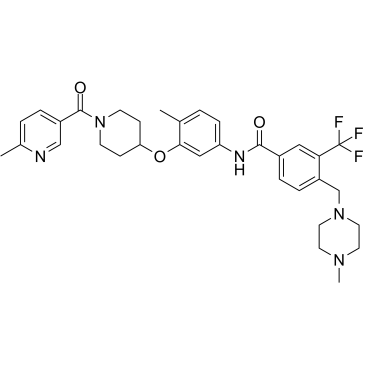
-
GC64028
Chrysosplenol D
Chrysosplenol D는 3중 음성 인간 유방암 세포에서 ERK1/2 매개 세포자멸사를 유도하는 메톡시 플라보노이드입니다.
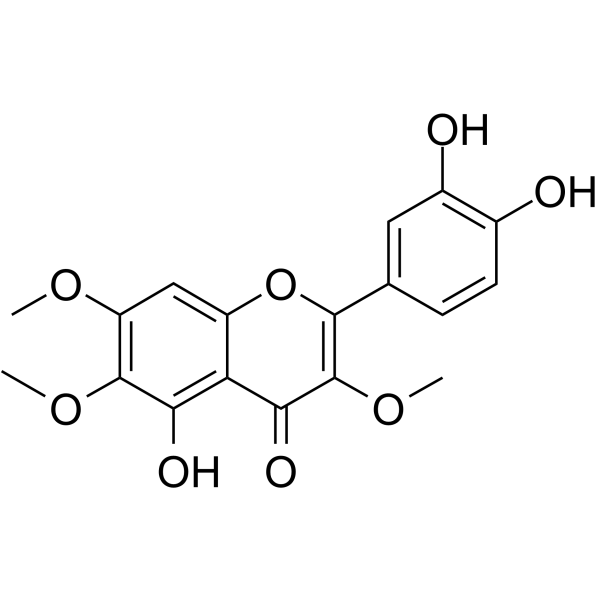
-
GC13408
CI994 (Tacedinaline)
An inhibitor of HDAC1, -2, and -3
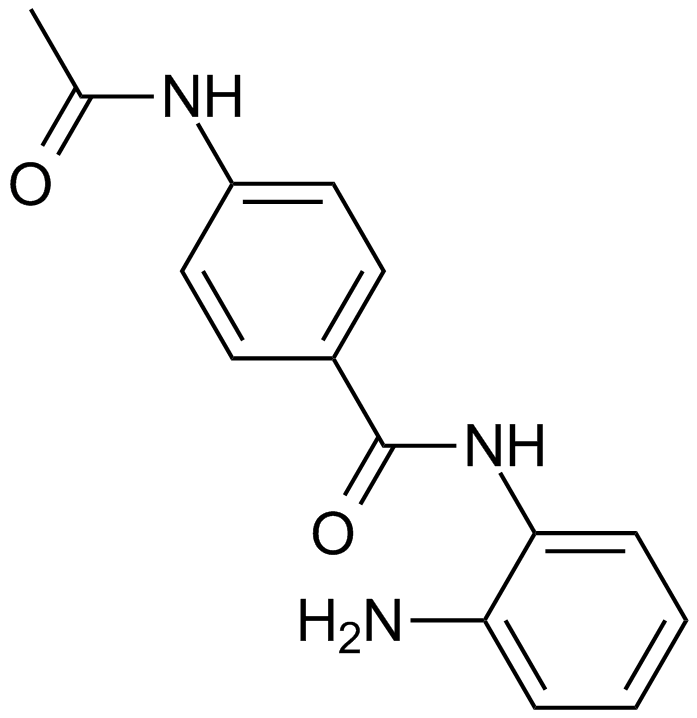
-
GC13589
CID 755673
CID 755673은 PKD1, PKD2 및 PKD3에 대해 IC50이 각각 182nM, 280nM 및 227nM인 강력한 PKD 억제제입니다.
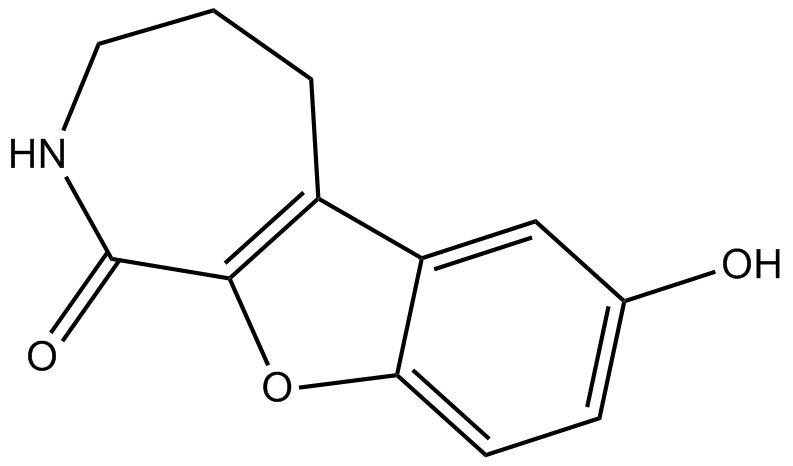
-
GC19436
CID-5721353
CID-5721353은 147μM의 Ki에 해당하는 212μM의 IC50 값을 갖는 BCL6의 억제제입니다.
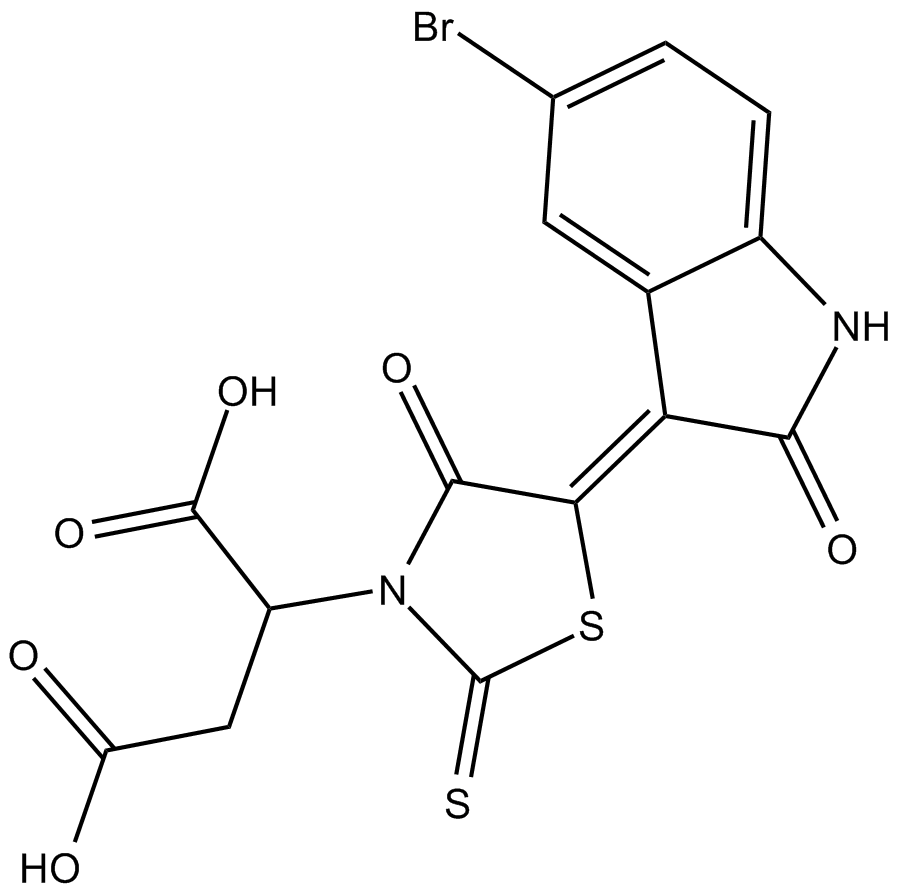
-
GC32997
Cinchonine ((8R,9S)-Cinchonine)
Cinchonine((8R,9S)-Cinchonine)은 Cinchona 나무 껍질에 존재하는 천연 화합물입니다. Cinchonine((8R,9S)-Cinchonine)은 인간 간암 세포에서 소포체 스트레스 유발 세포자멸사를 활성화합니다.
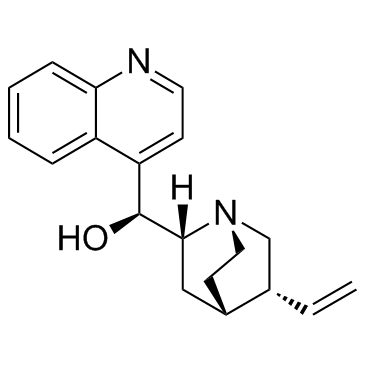
-
GC60708
Cinchonine hydrochloride
Cinchonine 염산염((8R,9S)-Cinchonine 염산염)은 항말라리아 활성이 있는 Cinchona 나무 껍질에 존재하는 천연 알칼로이드입니다. Cinchonine 염산염은 인간 간암 세포에서 소포체(ER) 스트레스 유발 세포자멸사를 활성화합니다.
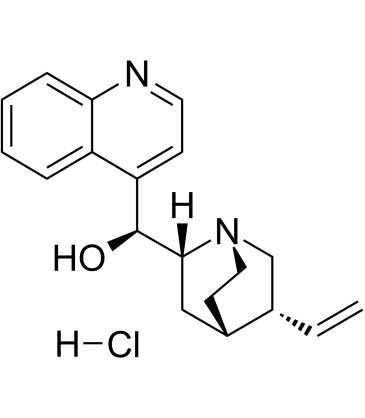
-
GC52269
Cinnabarinic Acid-d4
An internal standard for the quantification of cinnabarinic acid

-
GC40986
Cinnamamide
Cinnamamide is an amide form of of trans-cinnamic acid and a metabolite of Streptomyces.

-
GN10189
Cinobufagin
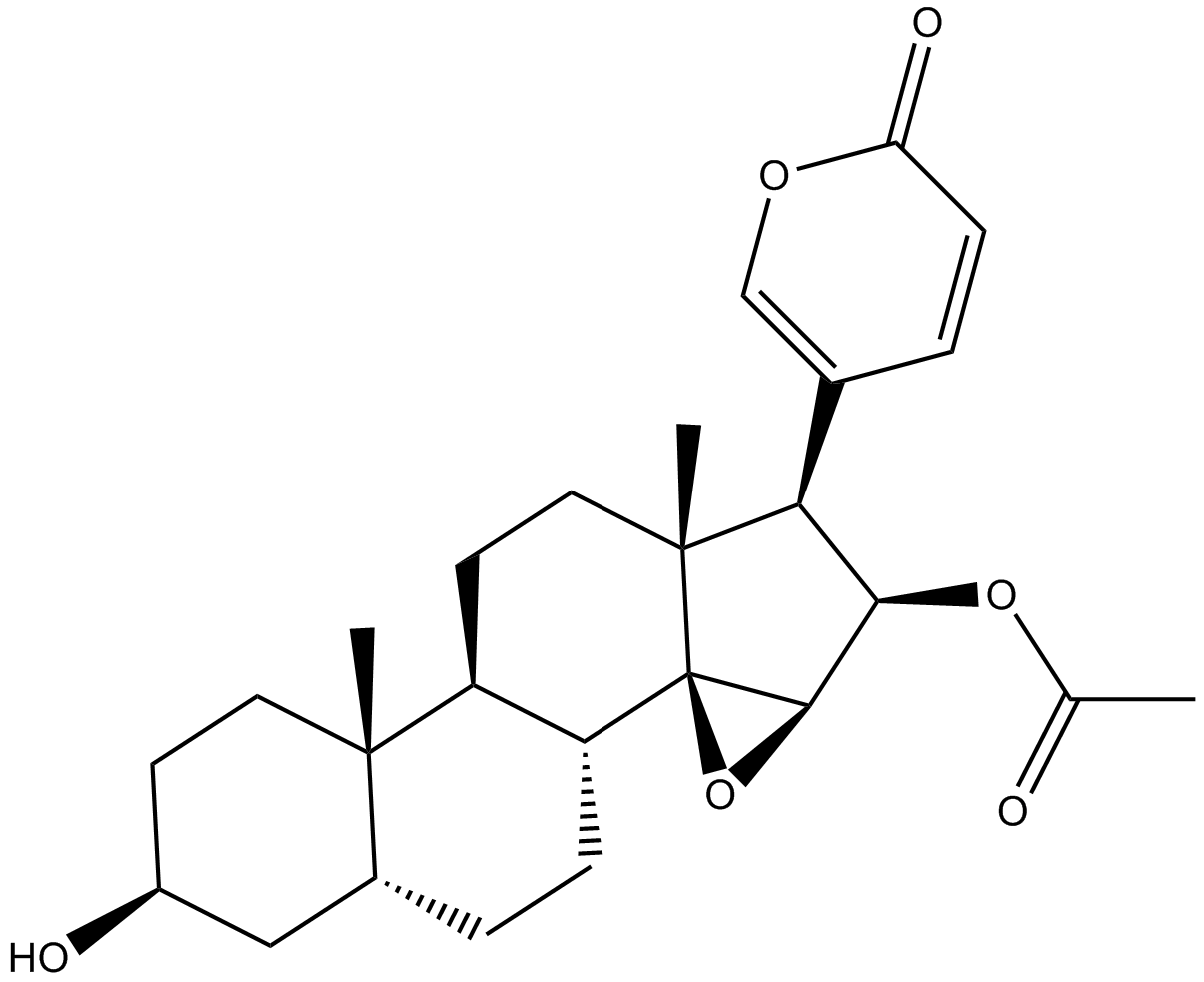
-
GC11908
Cisplatin
시스플라틴은 난소암, 방광암, 폐암, 자궁경부암, 두경부암, 위암 등 다양한 고체 암에 사용되는 최고의 금속 기반 항암제 중 하나입니다. 이는 널리 사용되는 최초의 금속 기반 항암제 중 하나이기도 합니다.
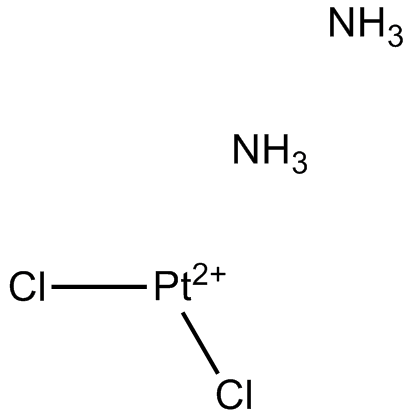
-
GC17491
CITCO
이미다조티아졸 유도체인 CITCO는 선택적 구성 안드로스탄 수용체(CAR) 작용제입니다. 씨티코(CITCO)는 뇌종양줄기세포(BTSC)의 성장과 확장을 억제하고 임신 X 수용체(PXR)에 비해 EC50이 49nM이고 다른 핵 수용체에는 활성이 없다.
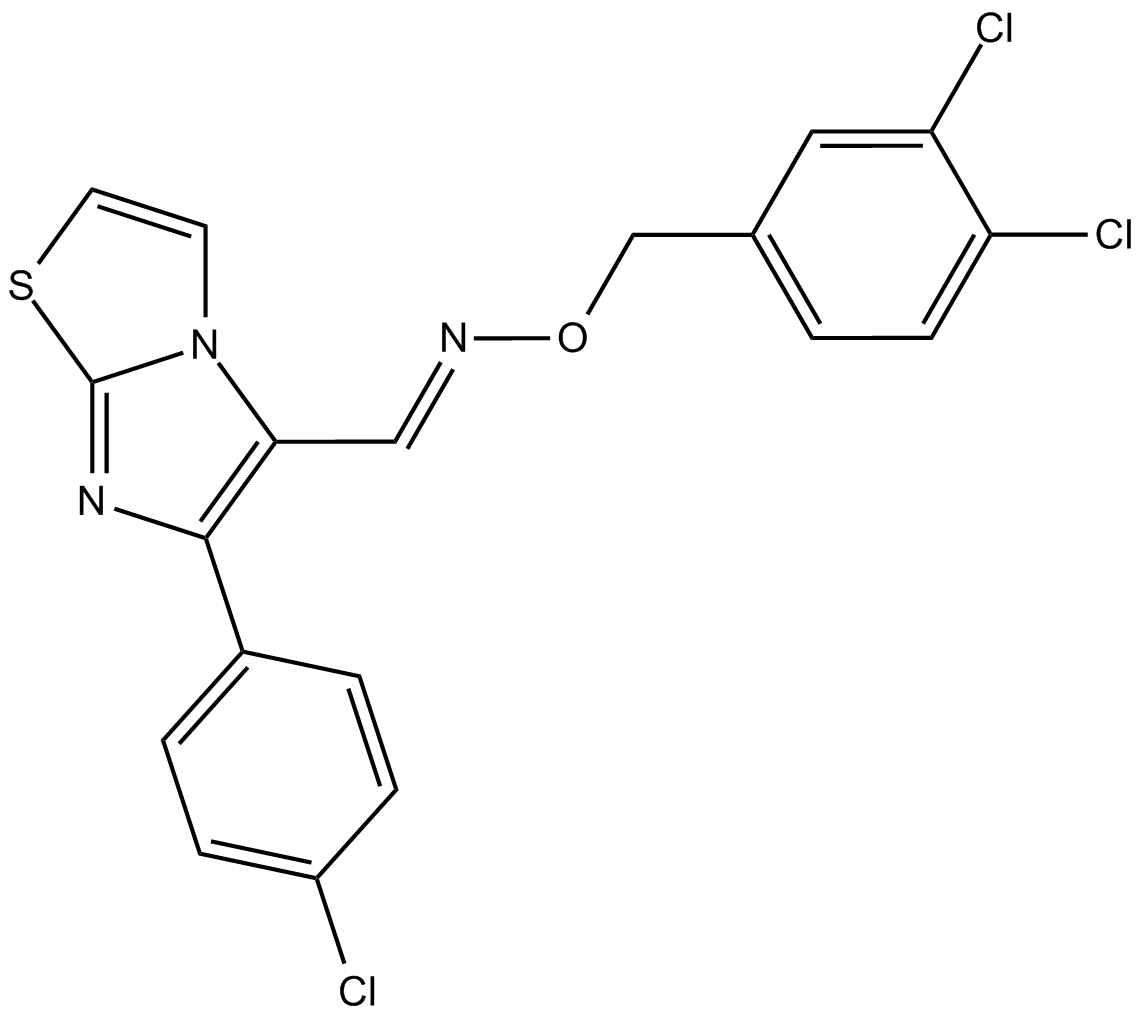
-
GC35703
Citicoline
시티콜린(Cytidine diphosphate-choline)은 세포막의 성분인 포스파티딜콜린 합성의 중간체입니다.
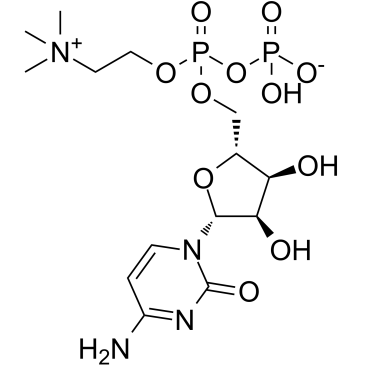
-
GC31186
Citicoline sodium salt
시티콜린 나트륨 염은 세포막의 구성 요소 인 인산 치닐 콜린 합성 중간체이며 또한 신경 보호 효과를 발휘합니다.
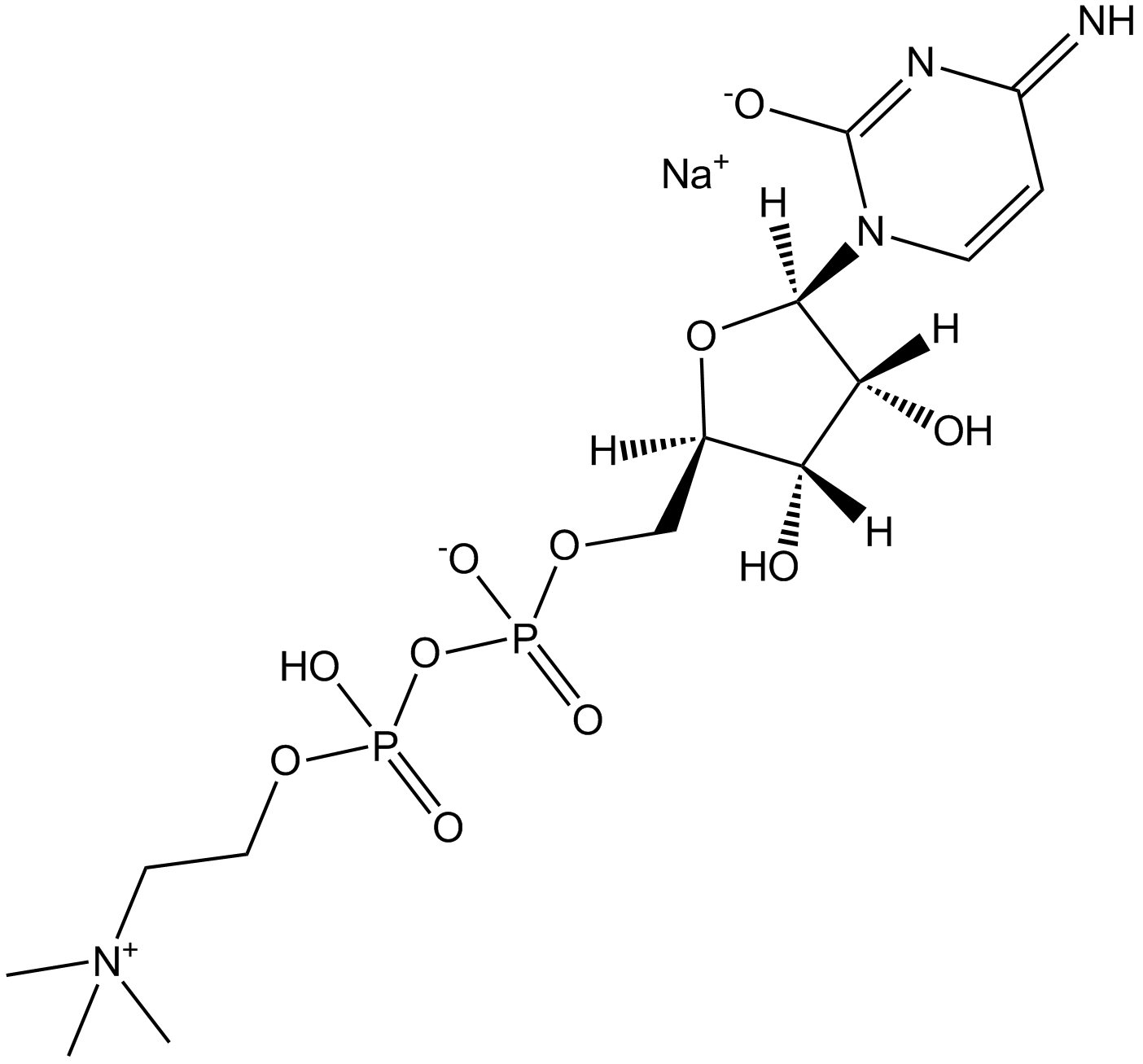
-
GC43273
Citreoindole
Citreoindole is a diketopiperazine metabolite isolated from a hybrid cell fusion of two strains of P.

-
GC41514
Citreoviridin
Penicillium citreoviride NRRL 2579의 독소인 Citroviridin은 뇌 시냅스 Na+/K+-ATPase를 억제하는 반면 마이크로솜에서는 Na+/K+-ATPase와 Mg2+-ATPase 활성을 억제합니다. 용량 의존적으로 크게 자극됩니다.

-
GC14203
Citric acid
구연산은 천연 방부제이자 음식의 신맛을 향상시키는 역할을 합니다.
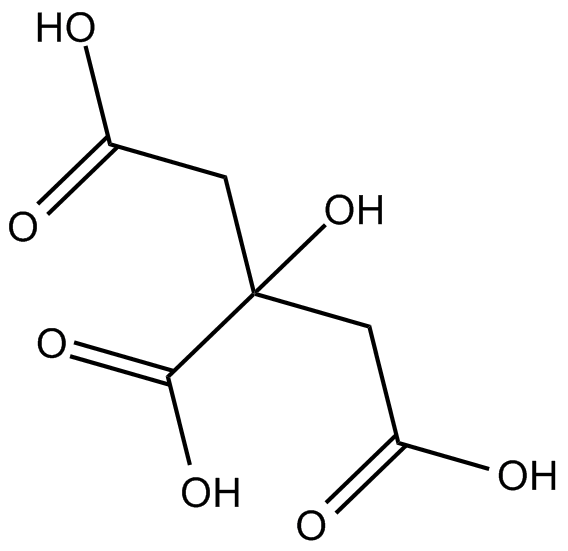
-
GC68051
Citric acid-d4

-
GC16661
Citrinin
세포사멸을 유발하는 마이코톡신
